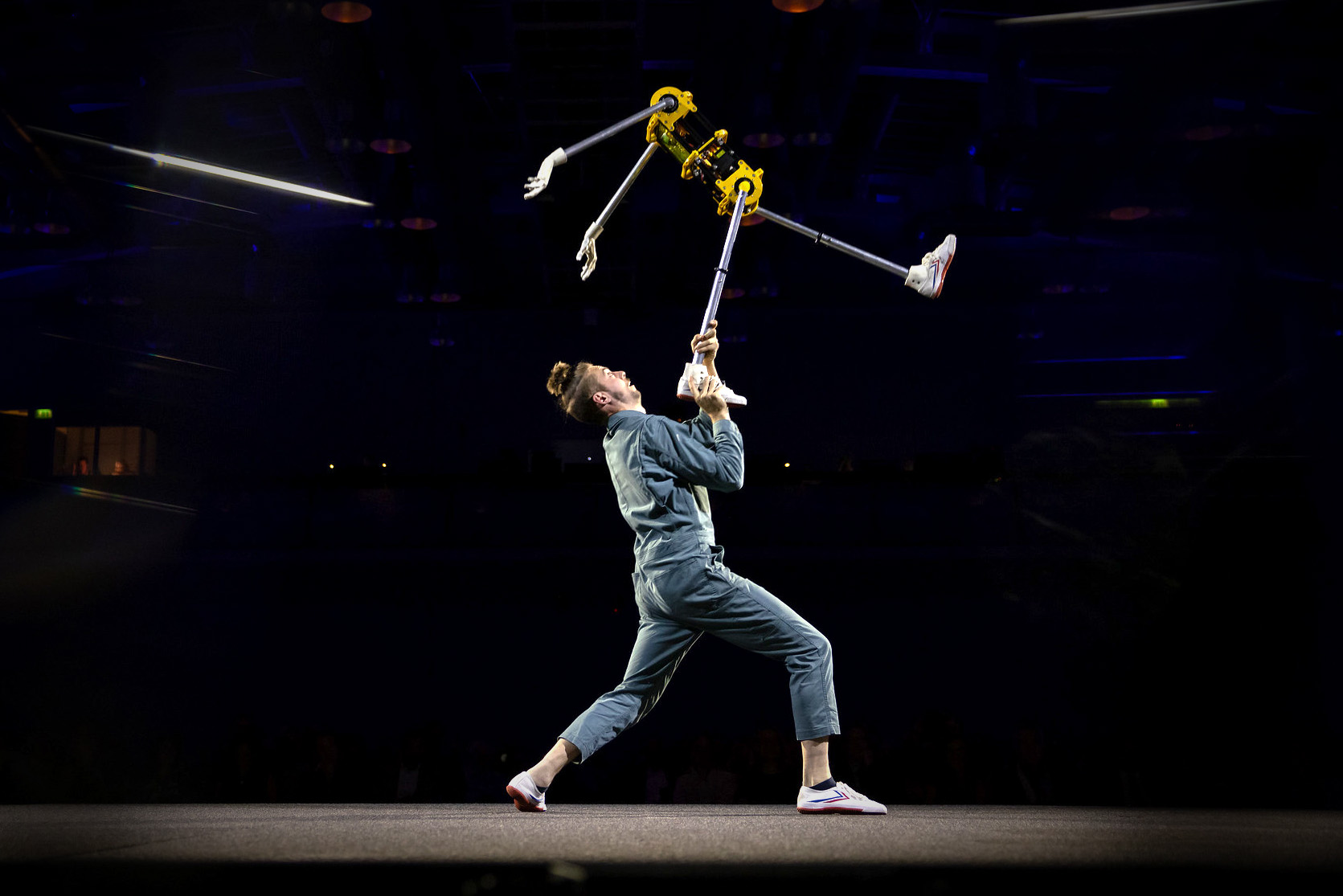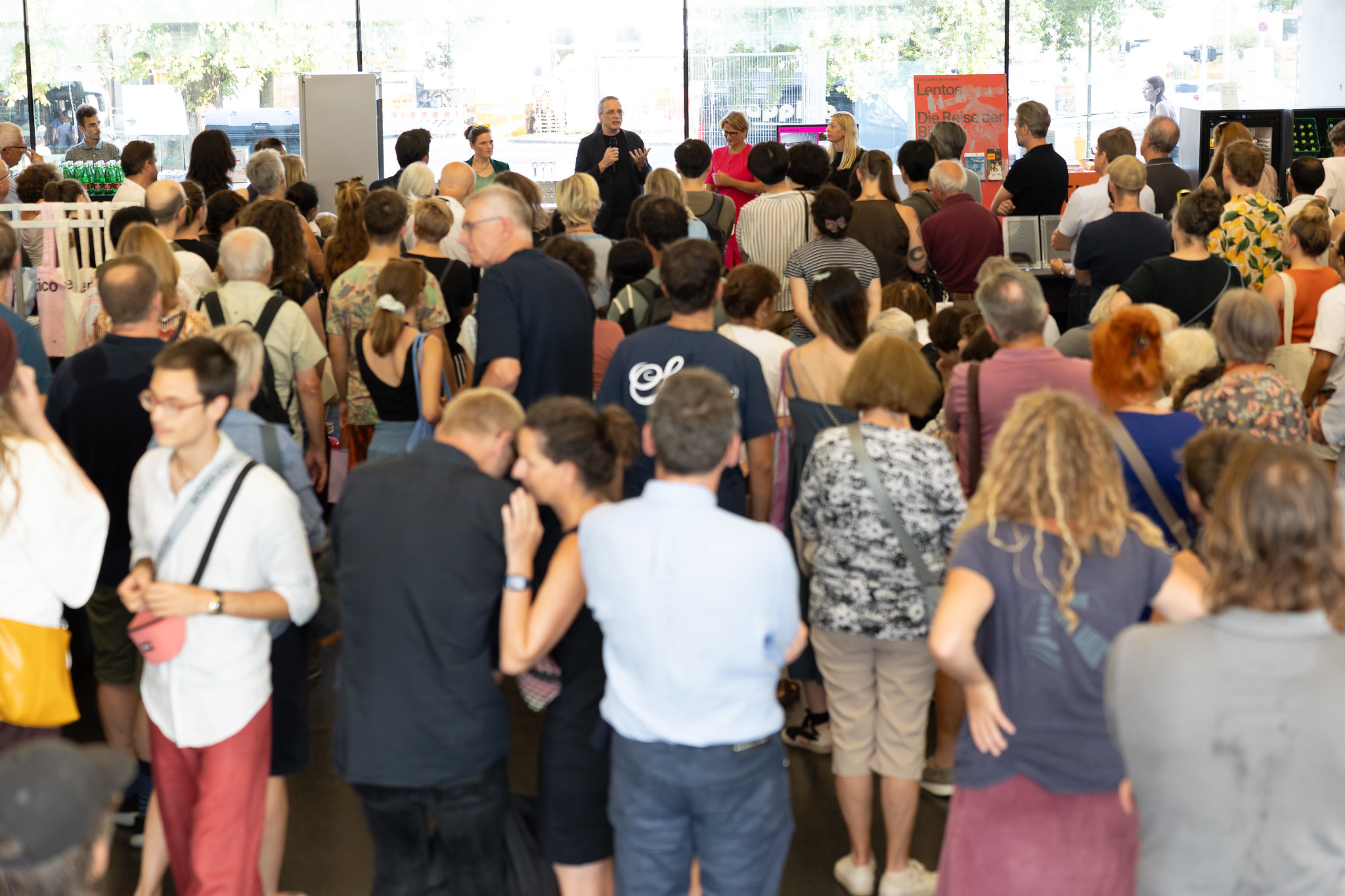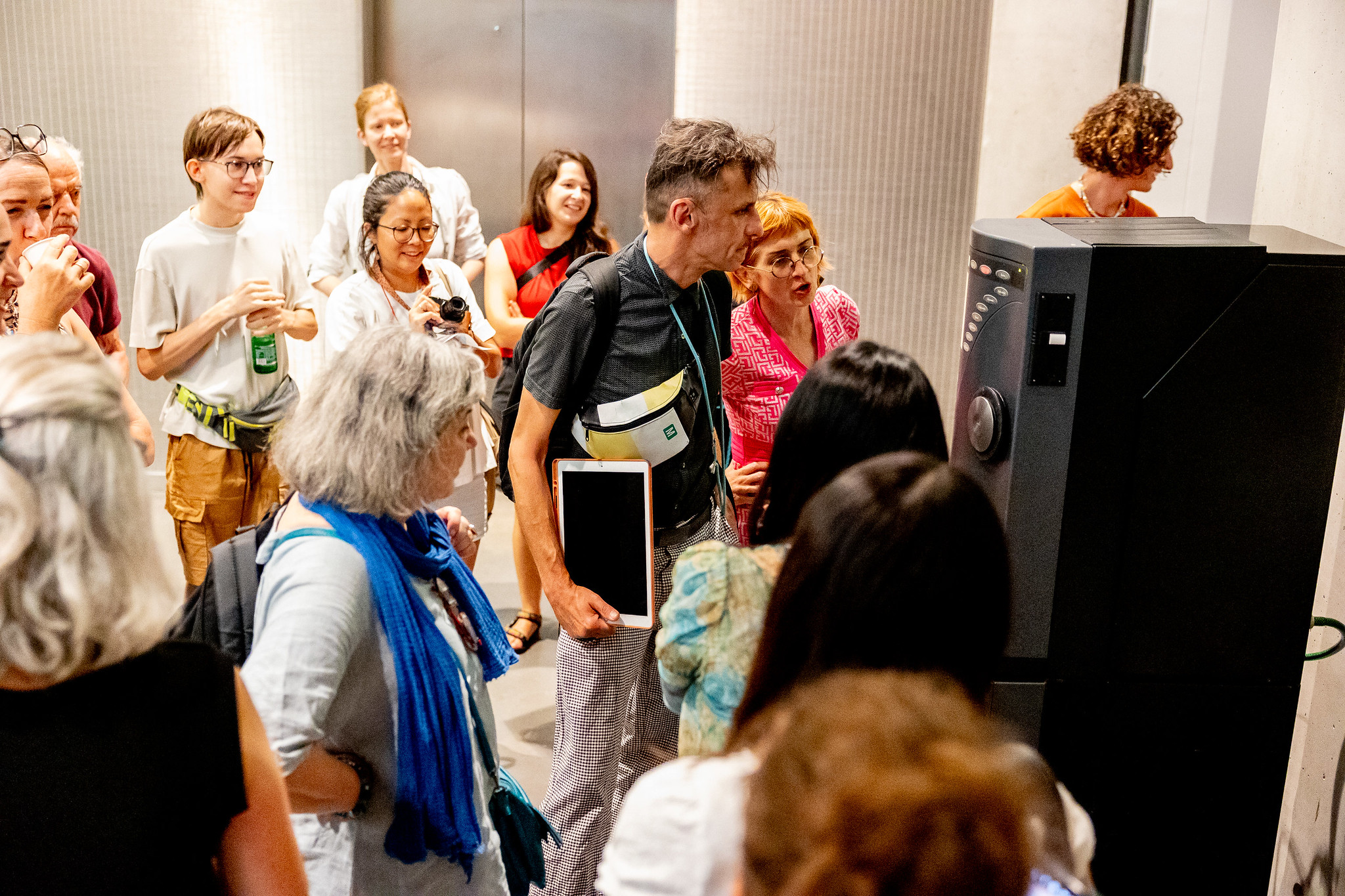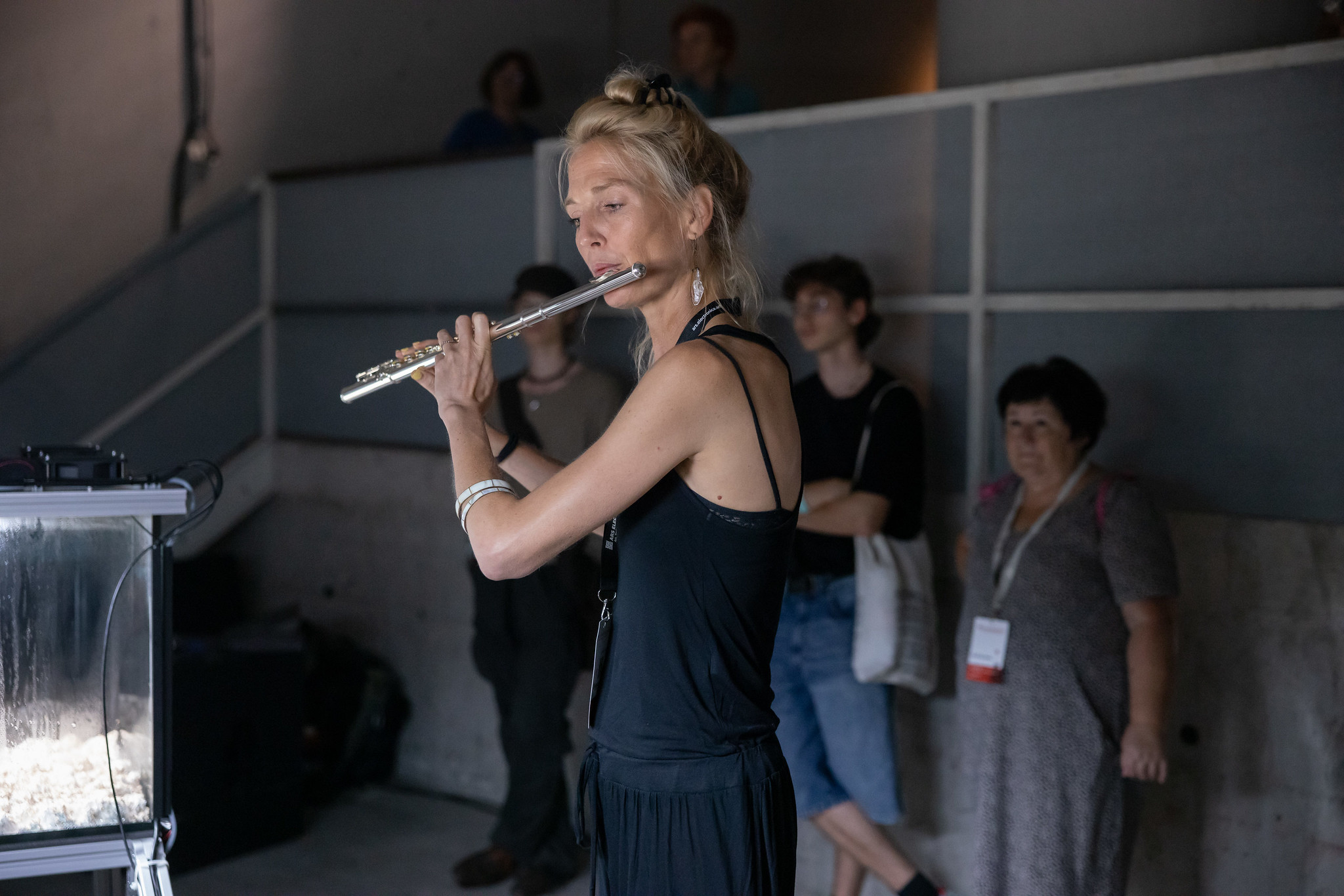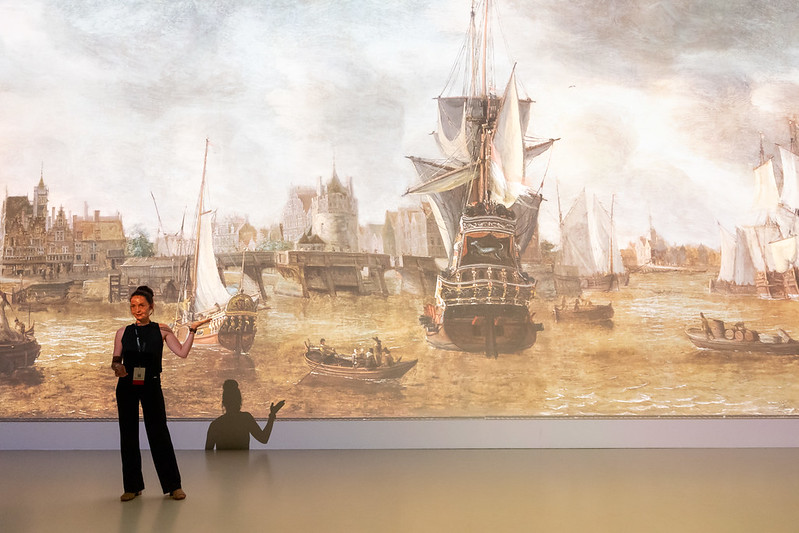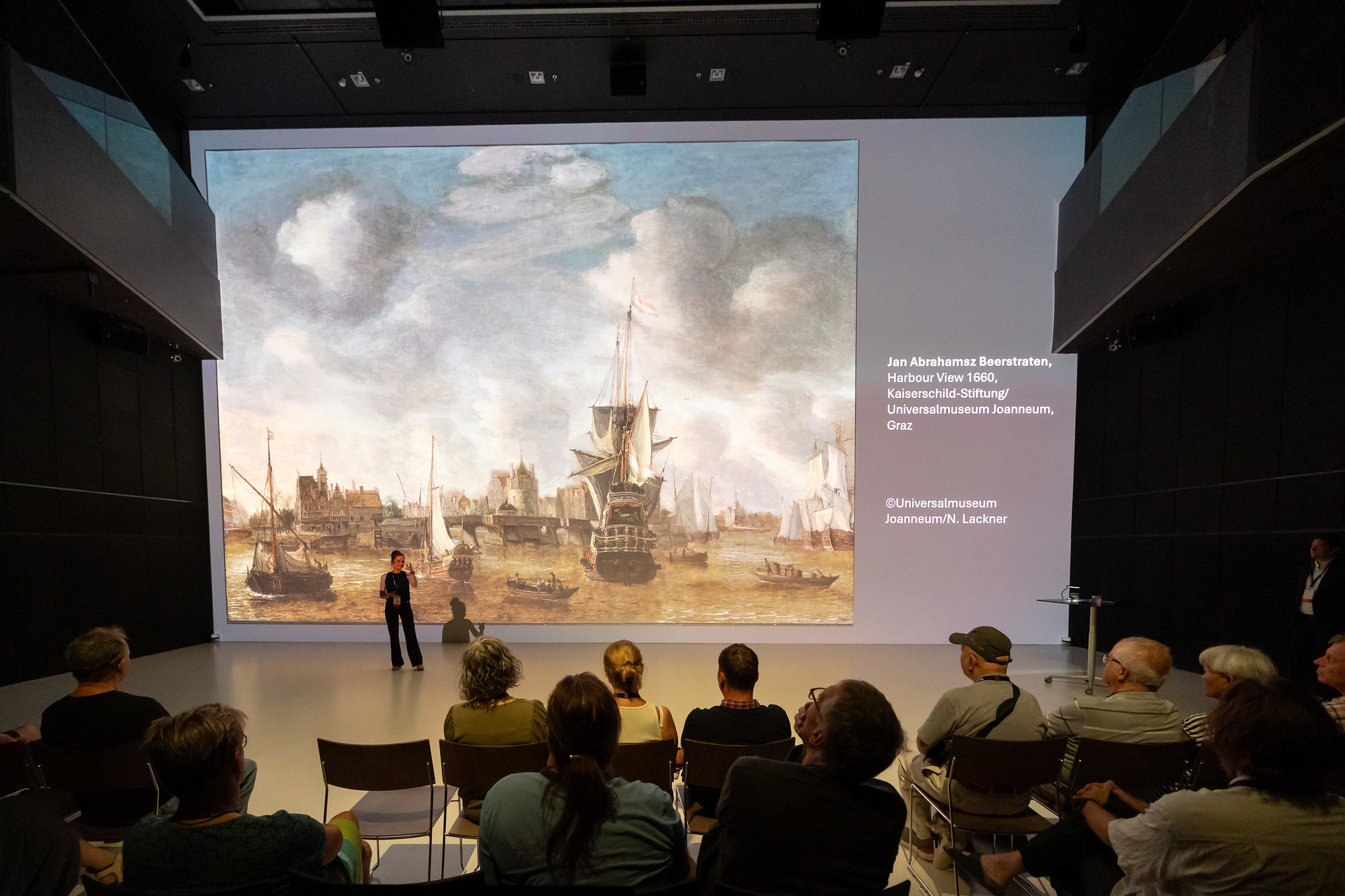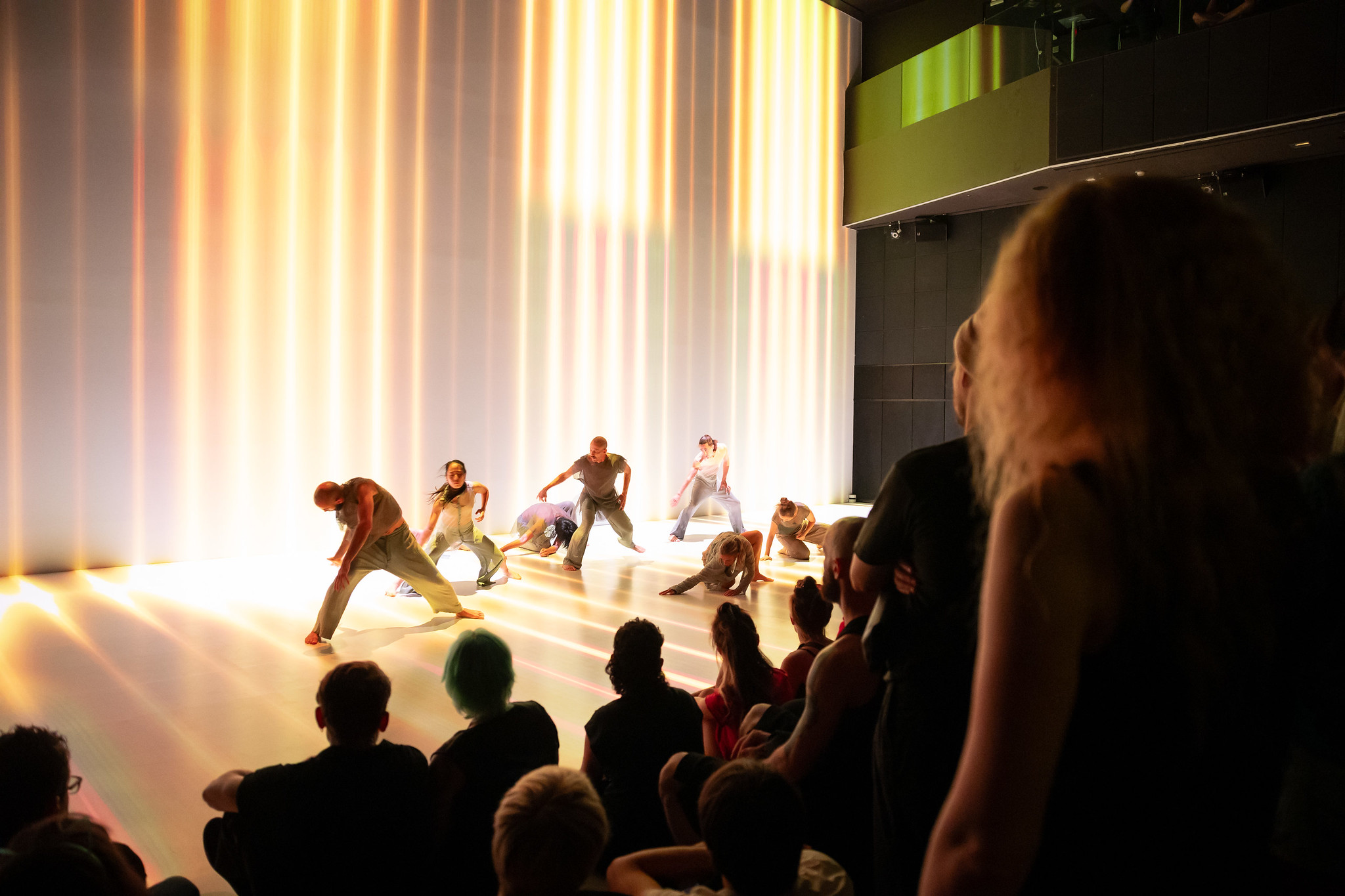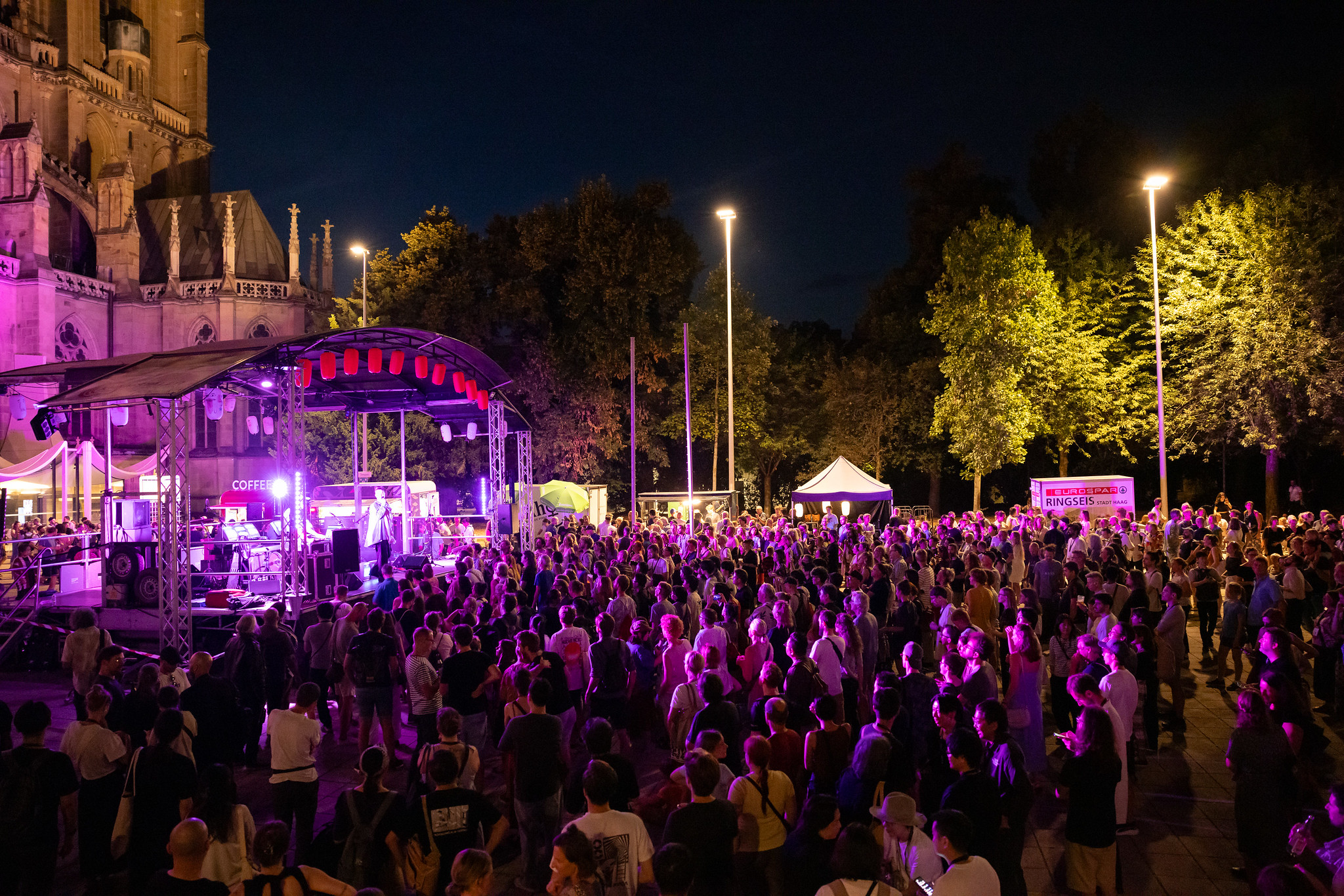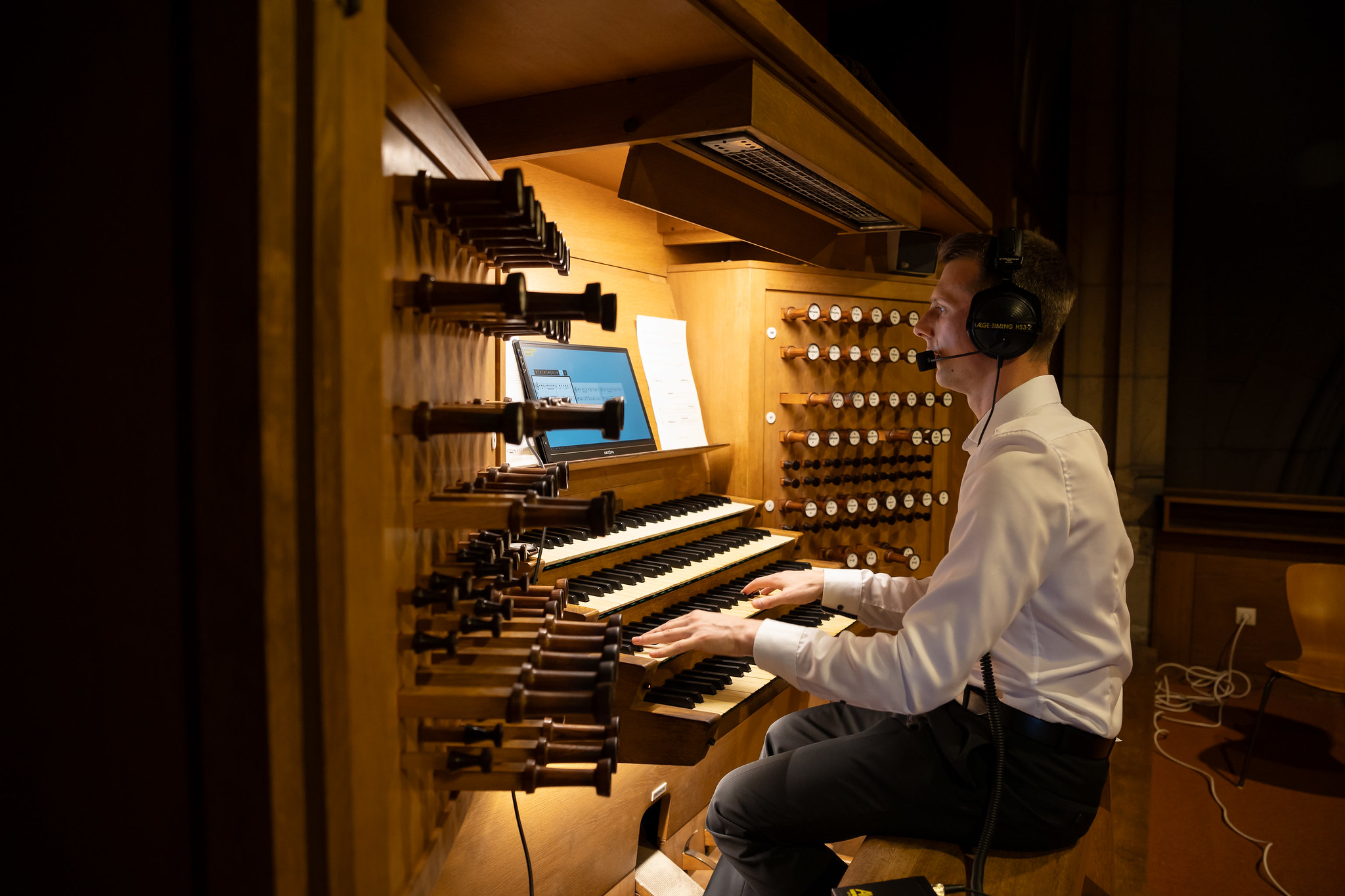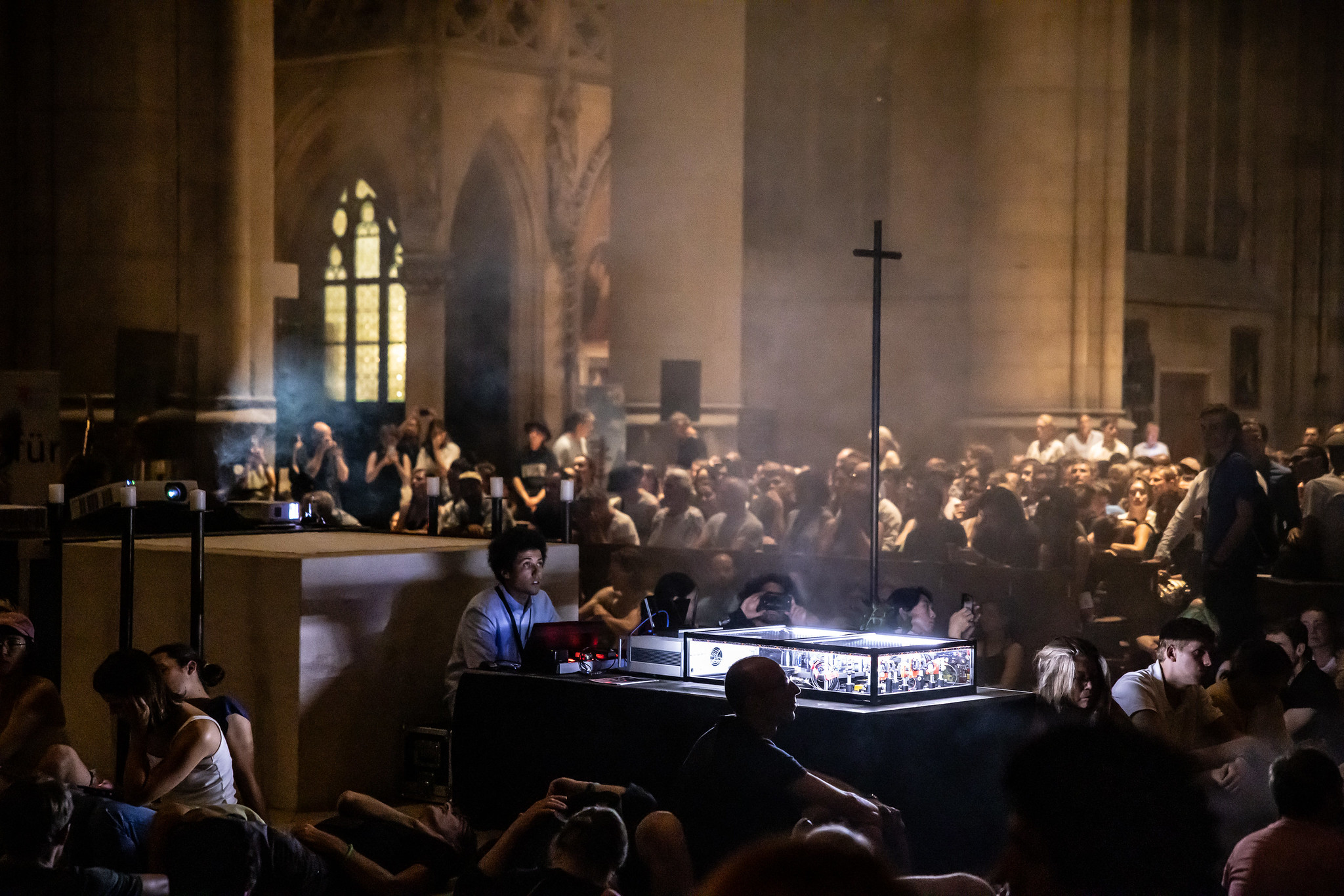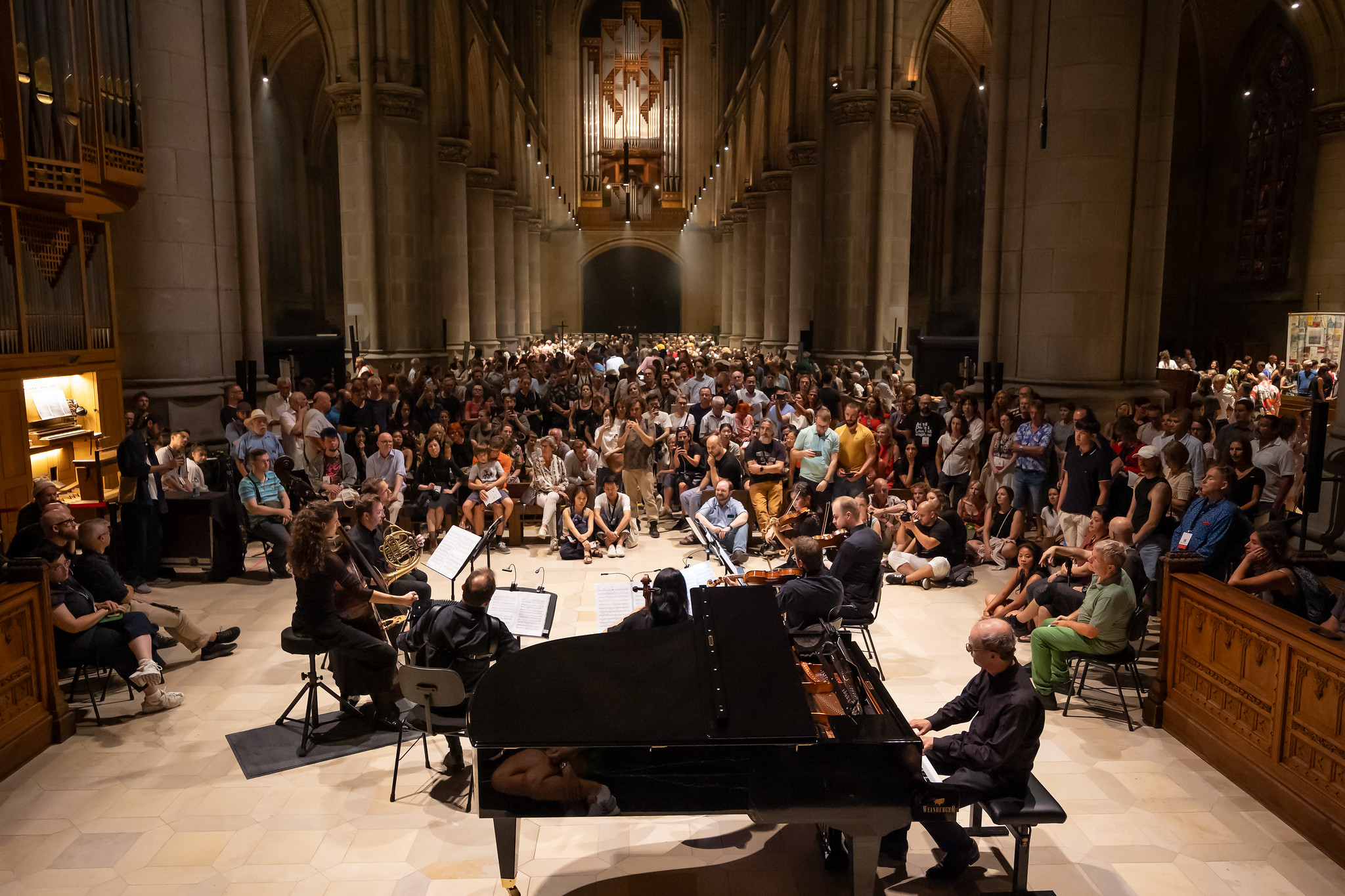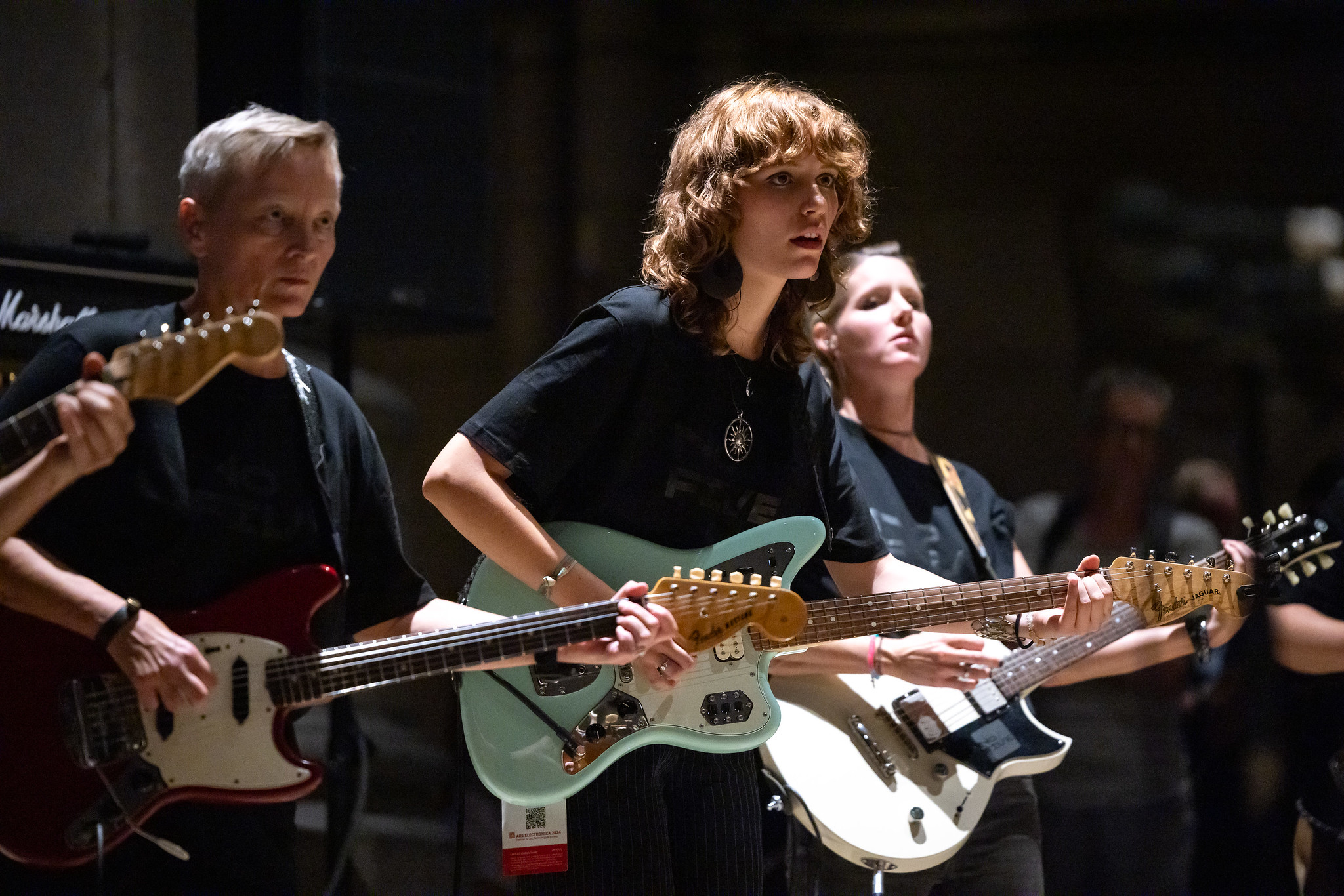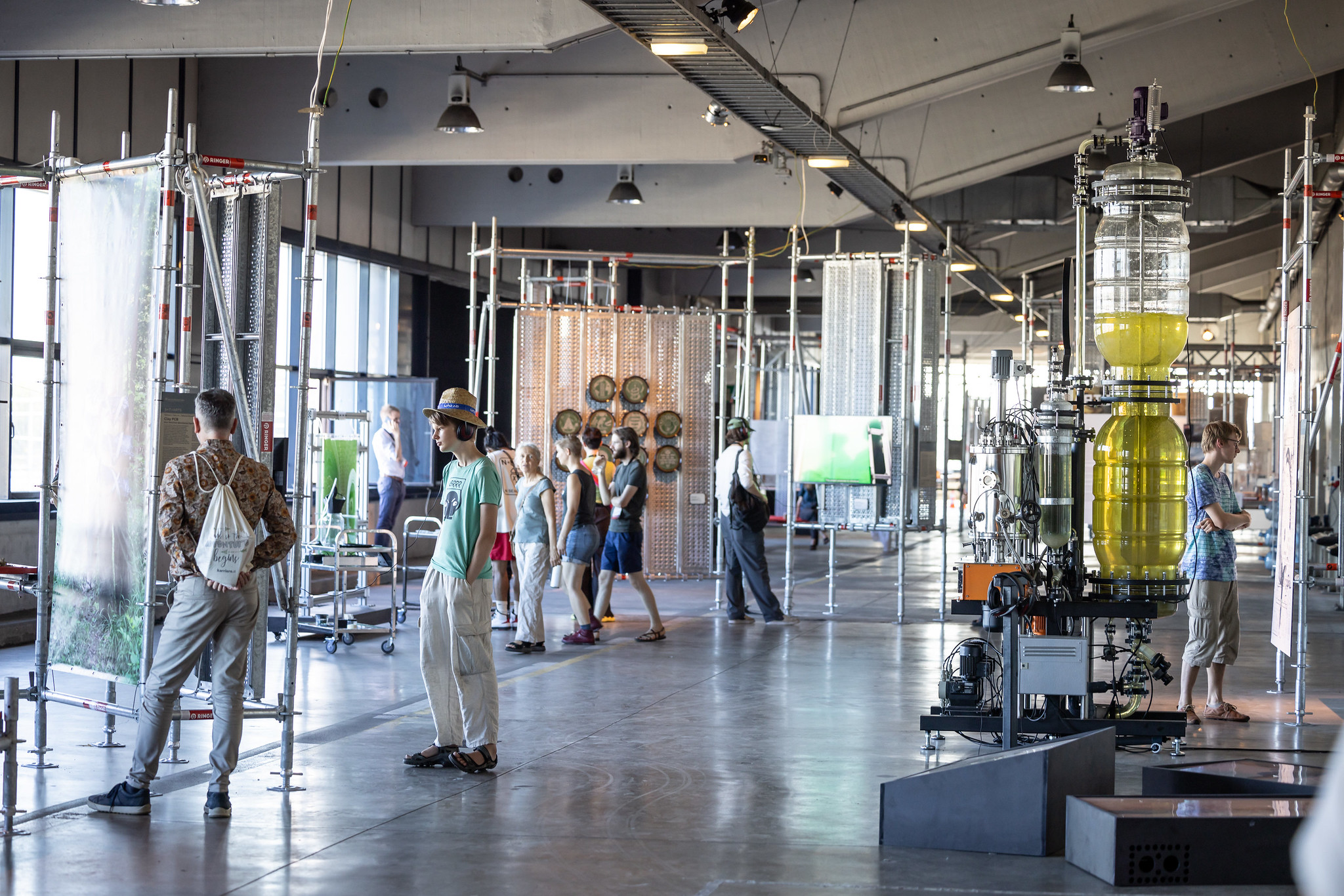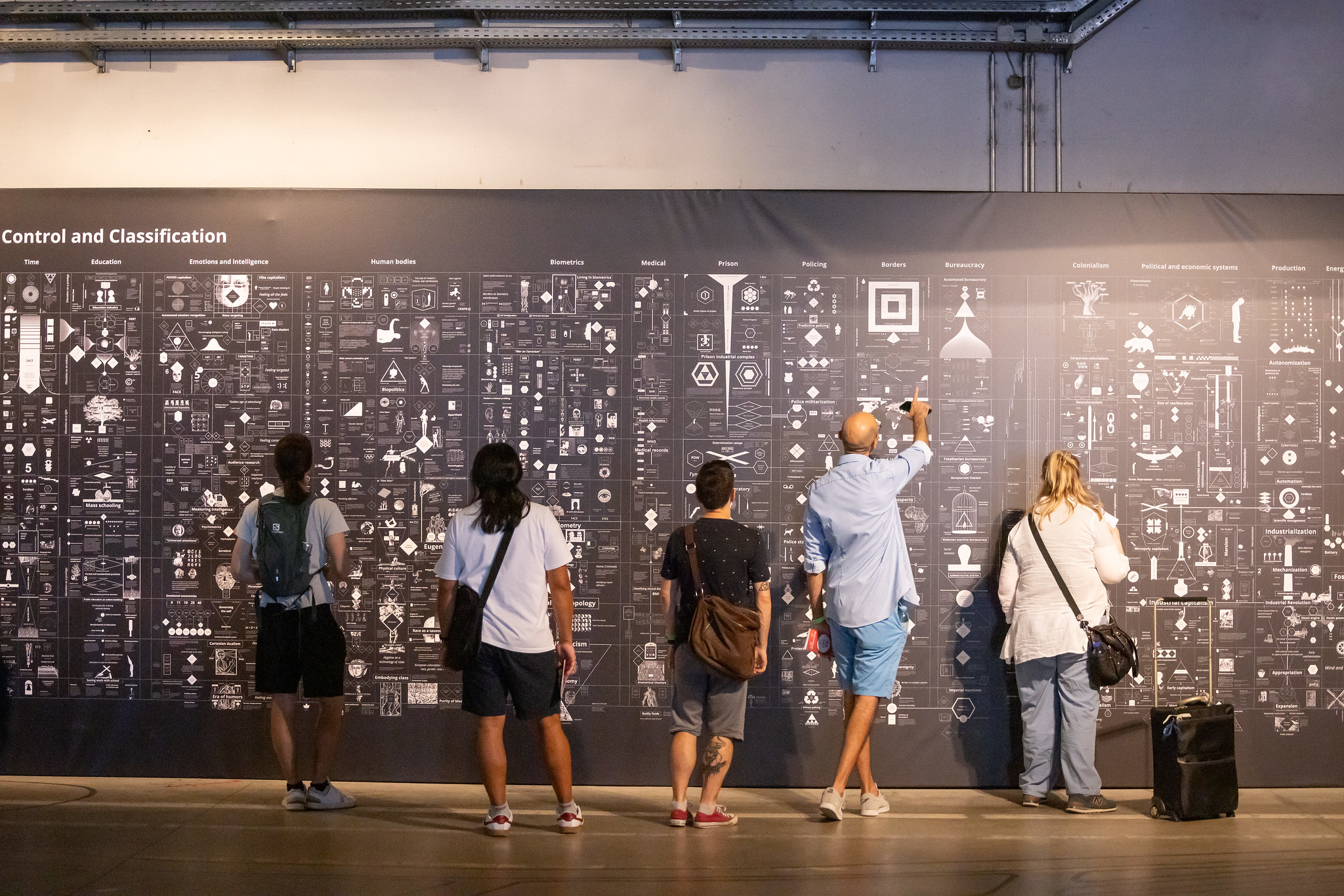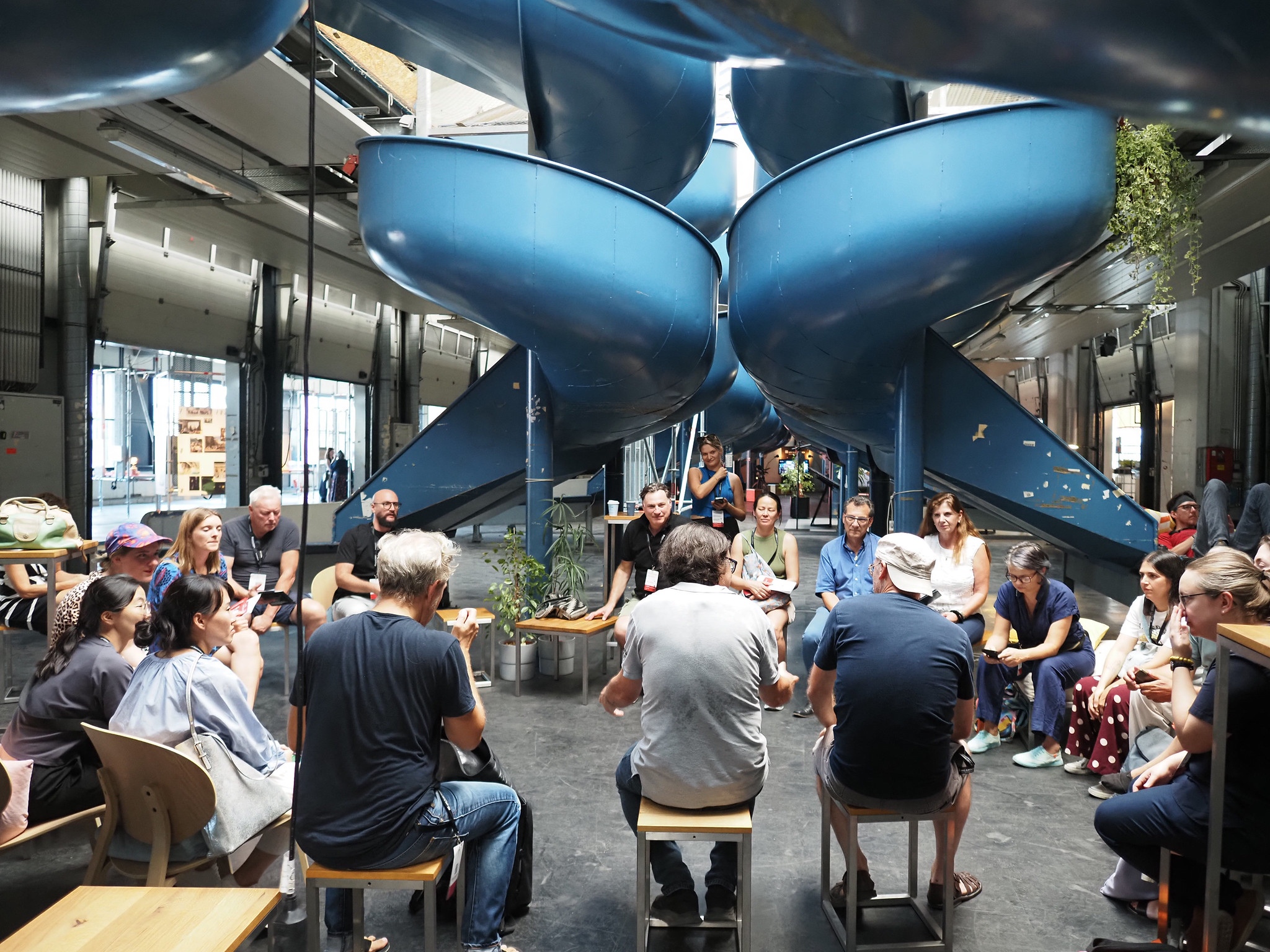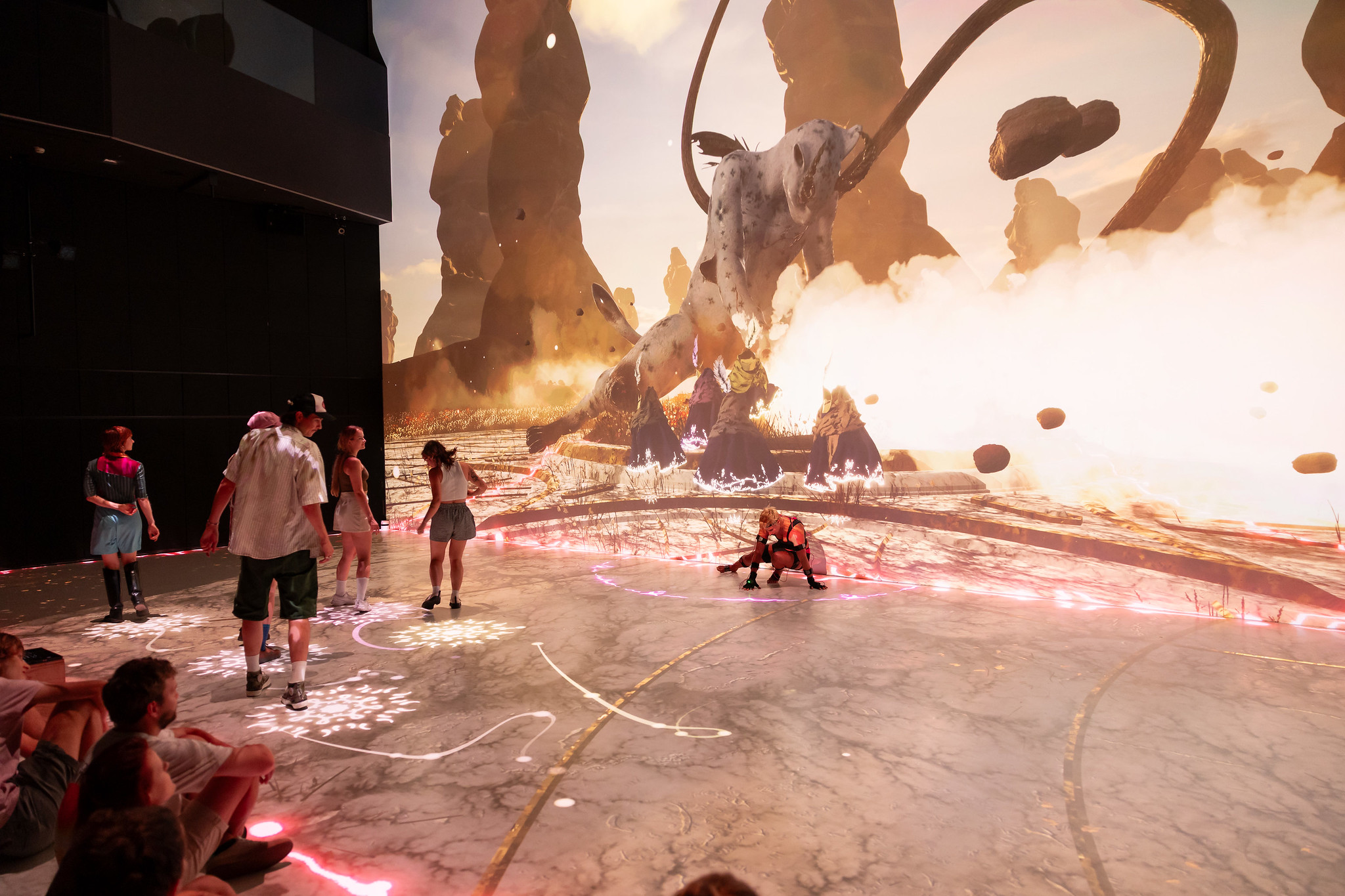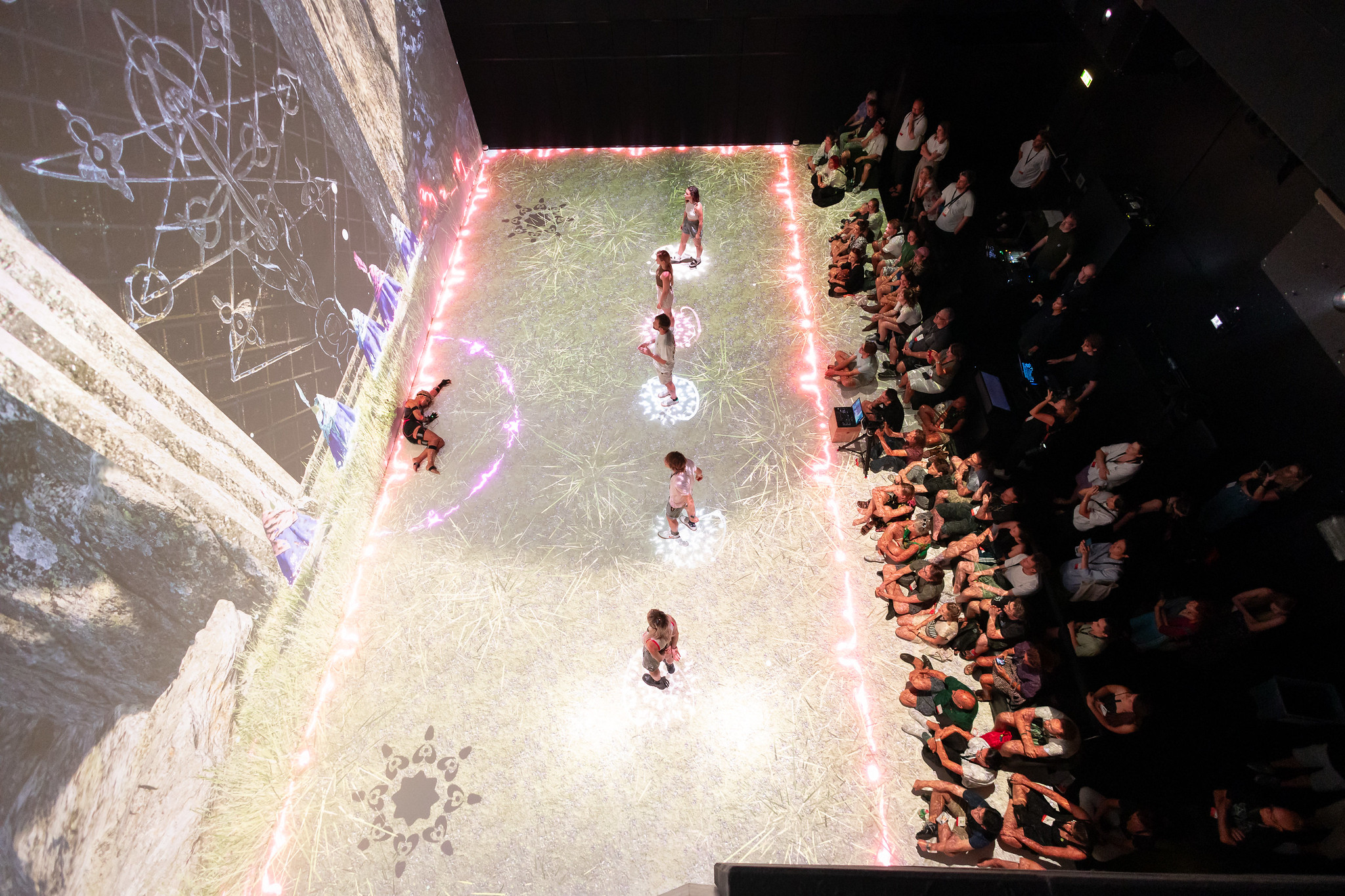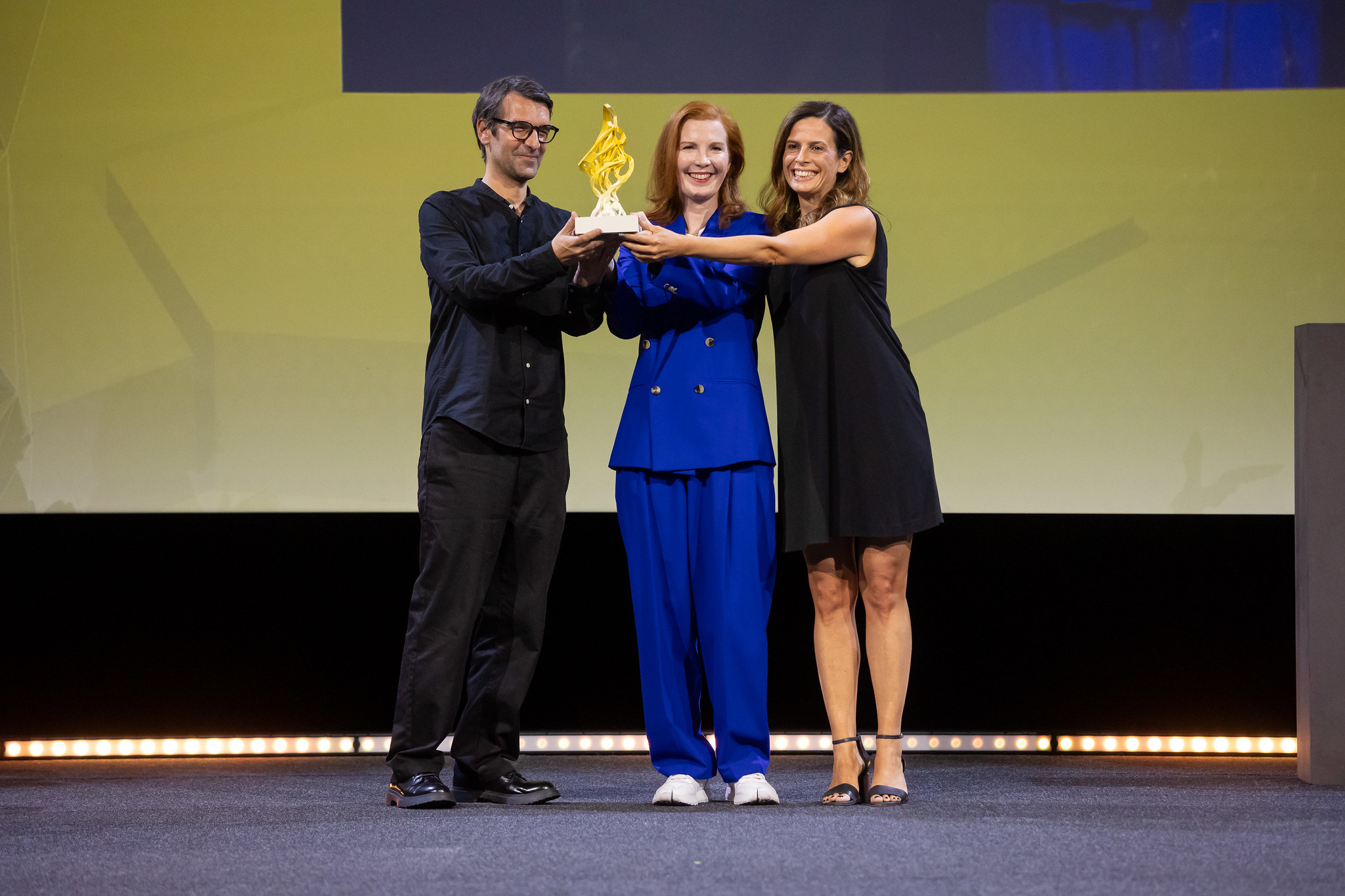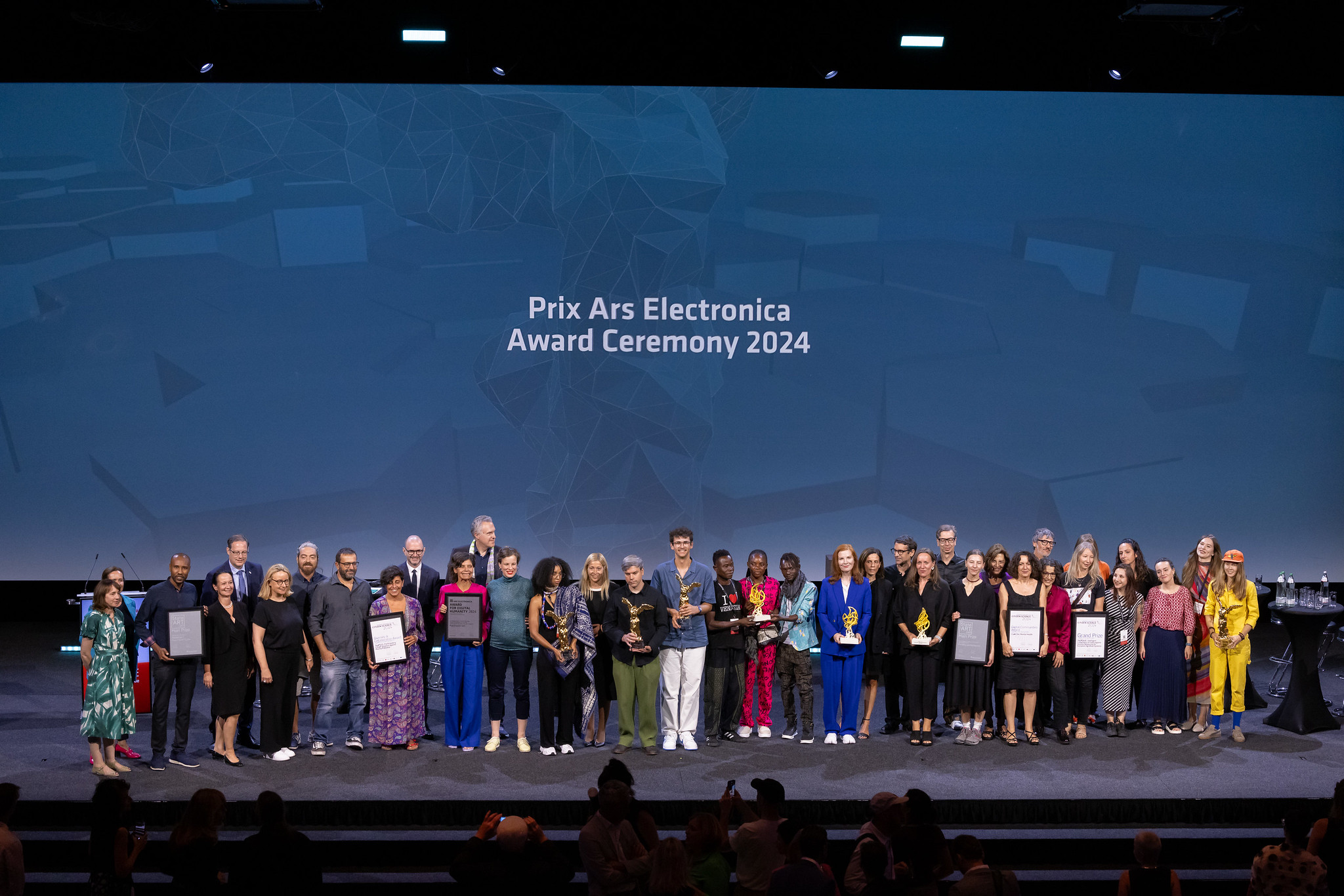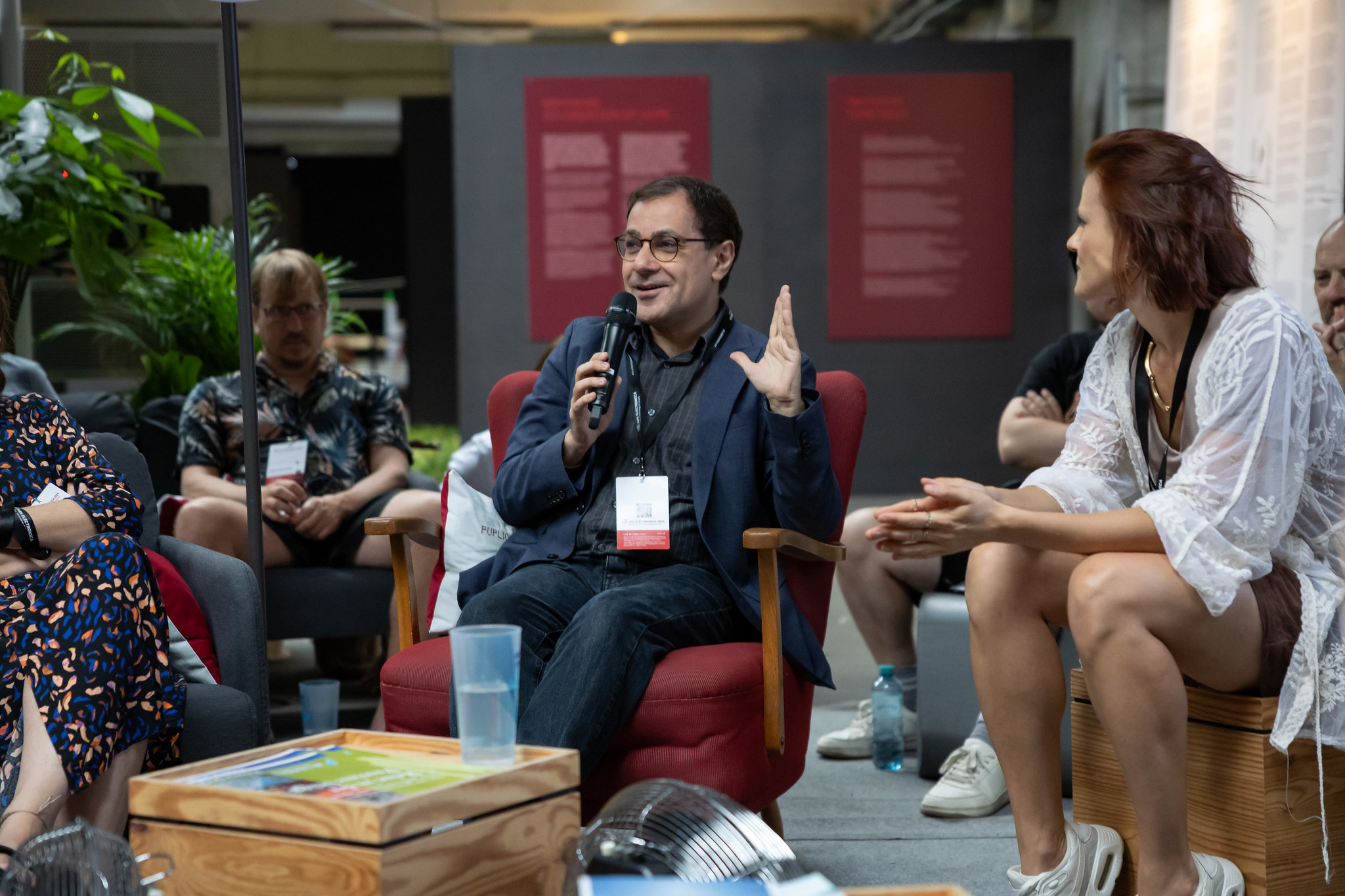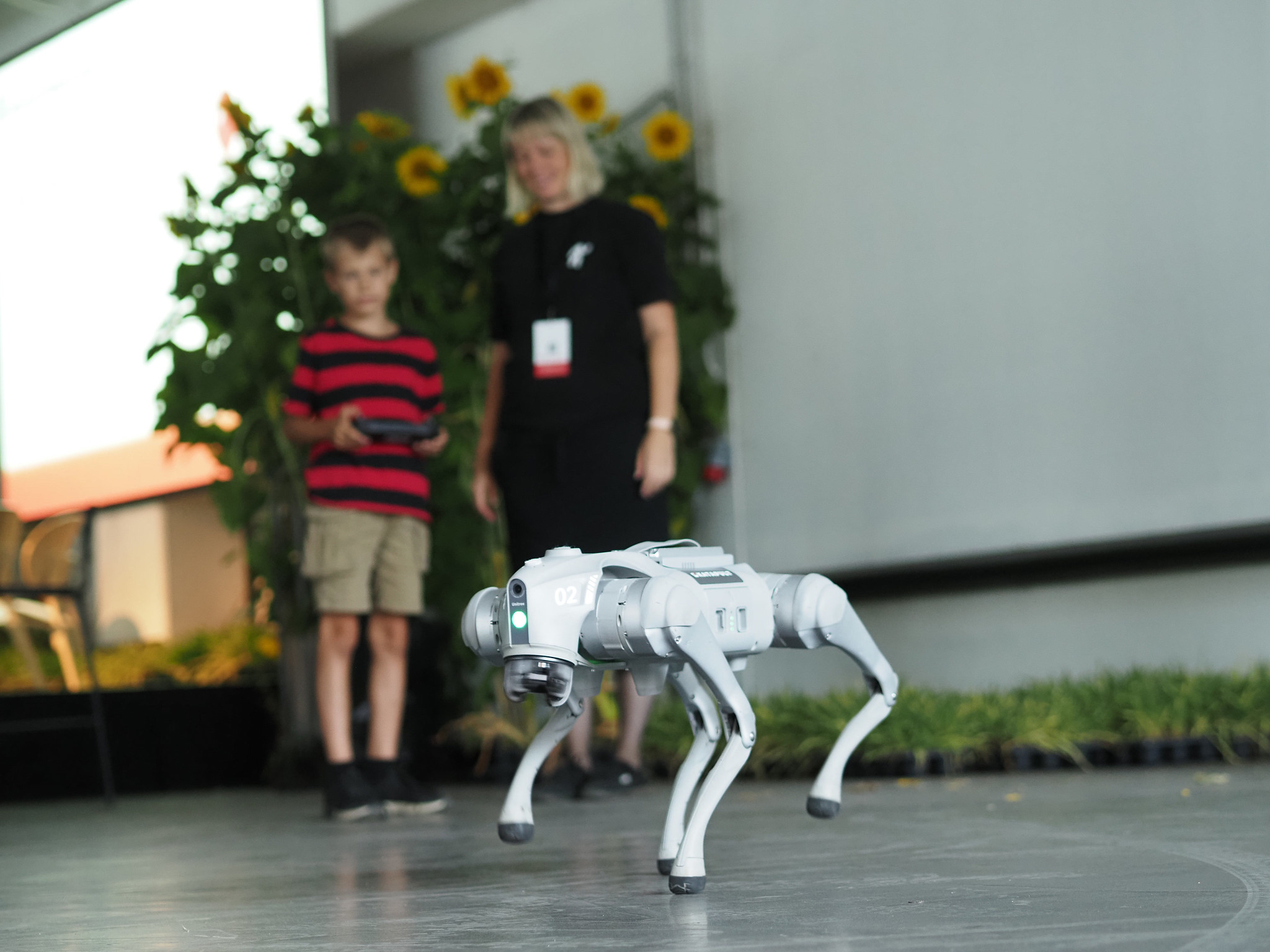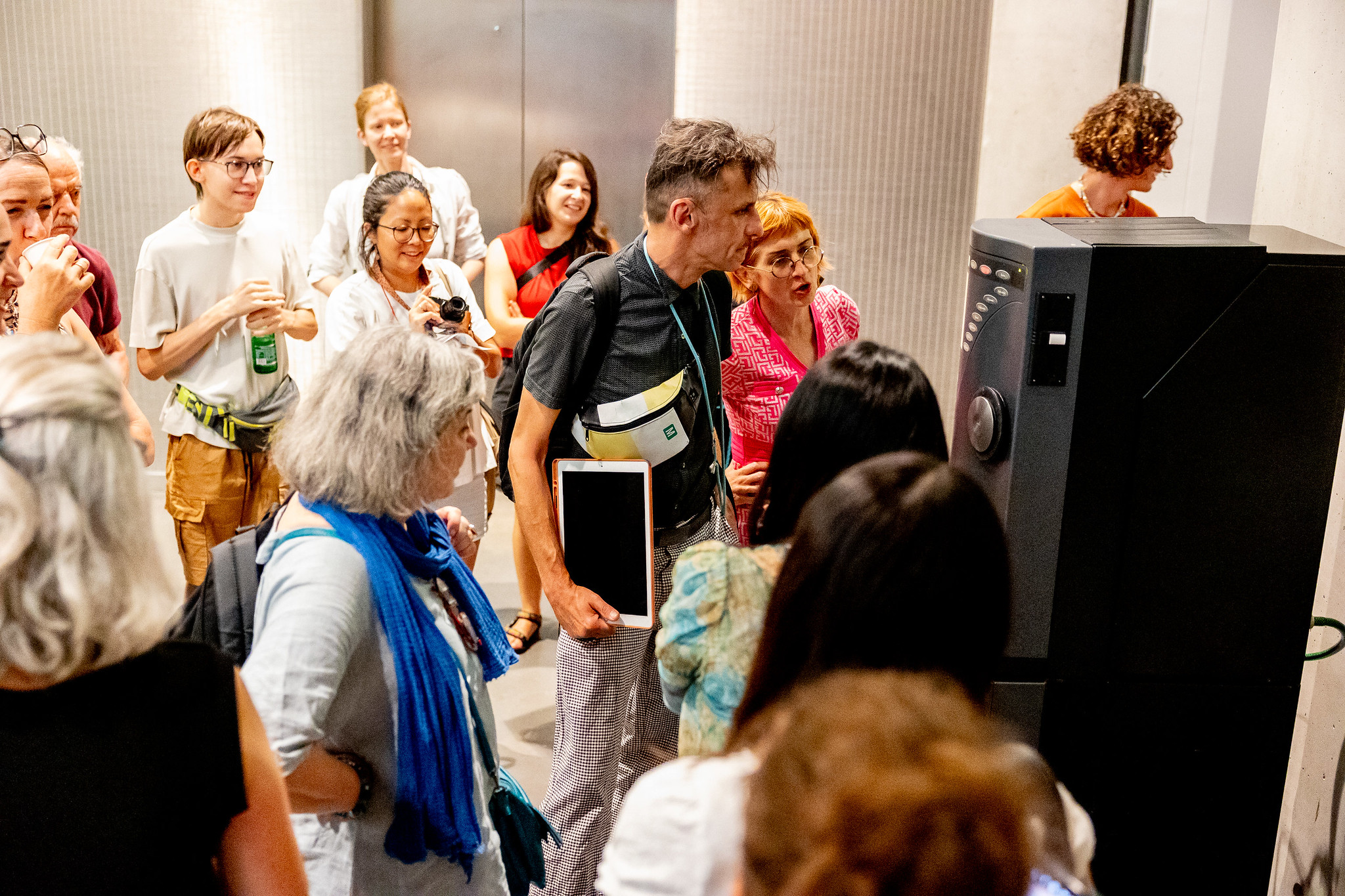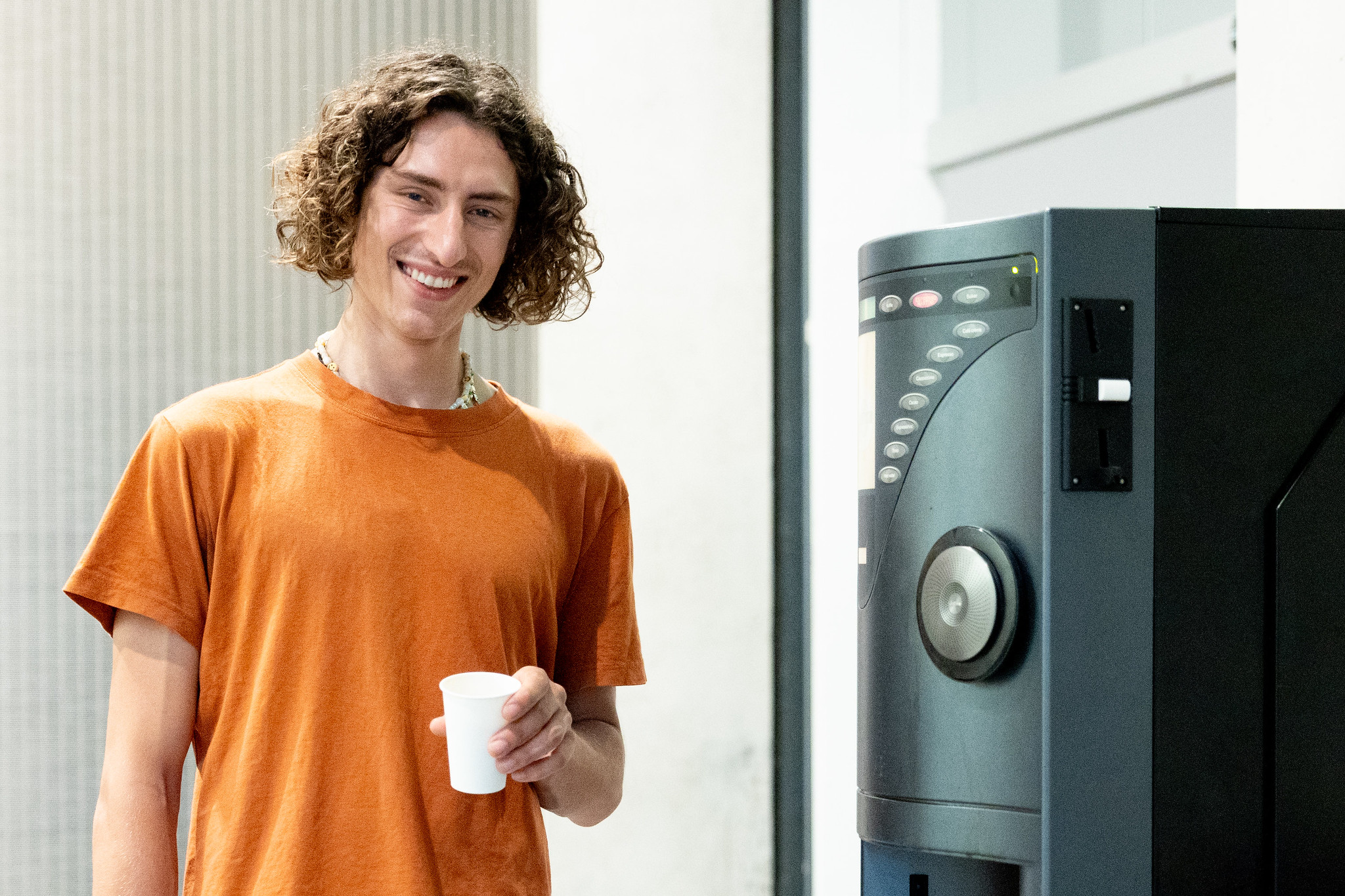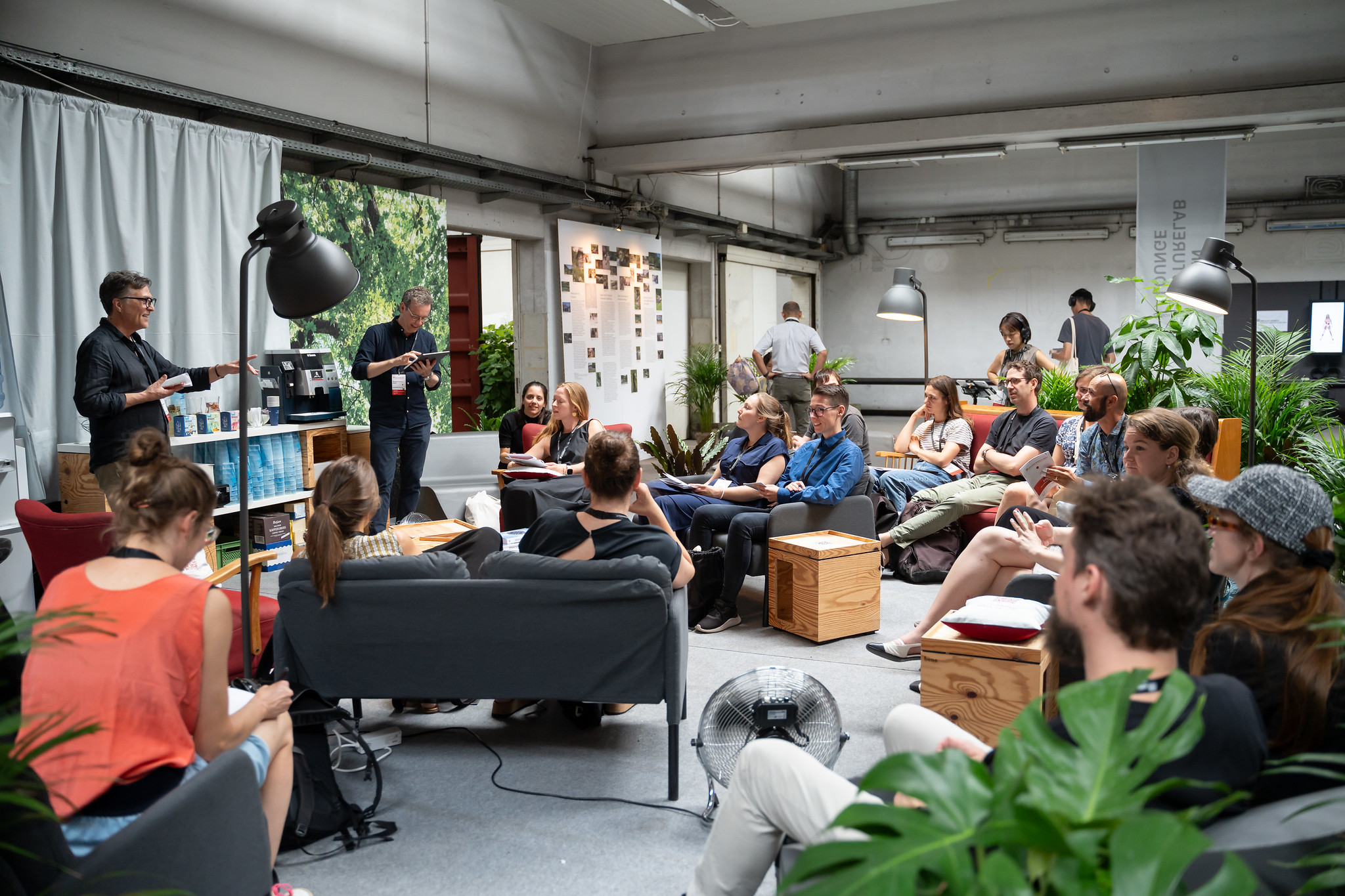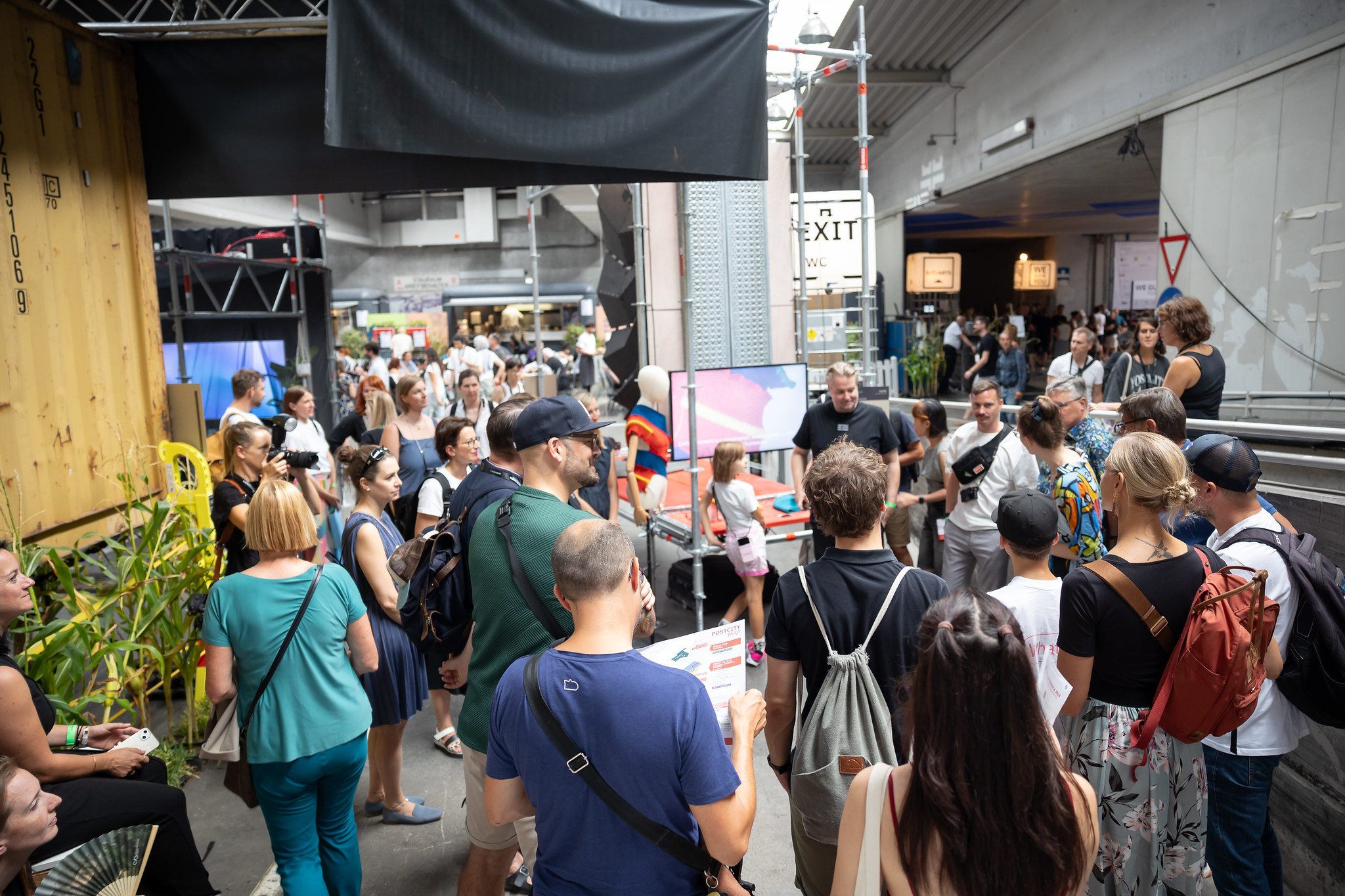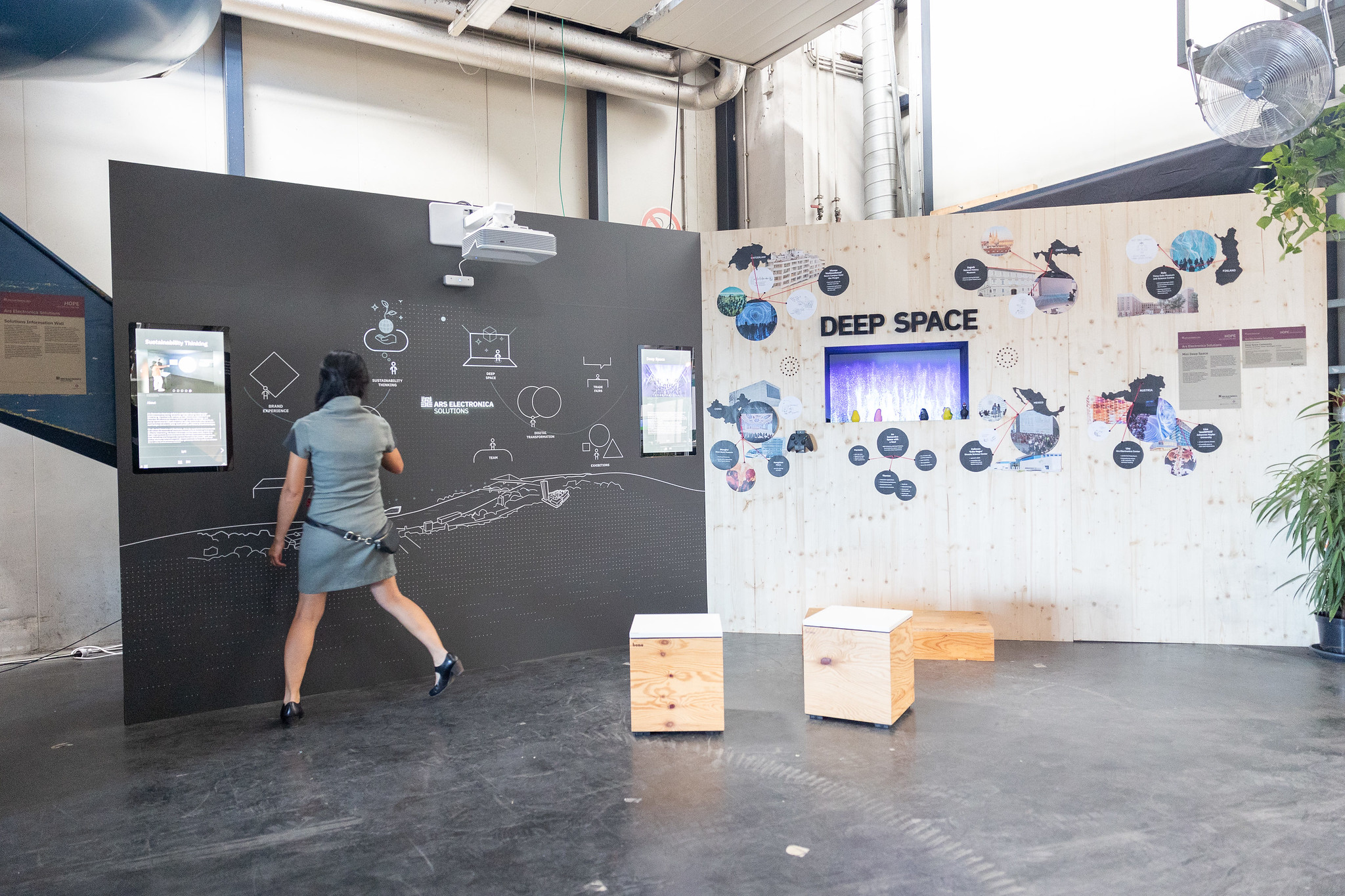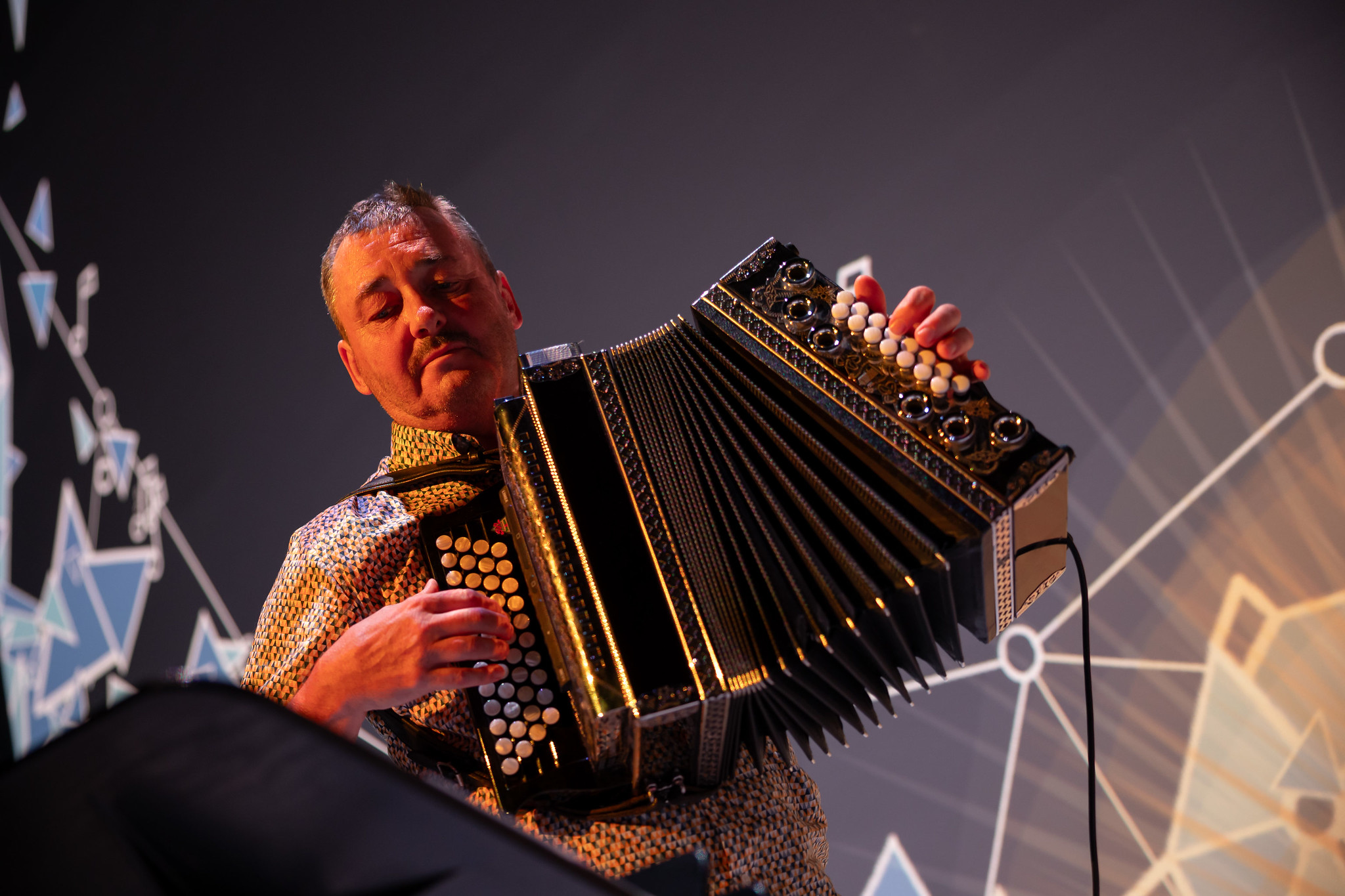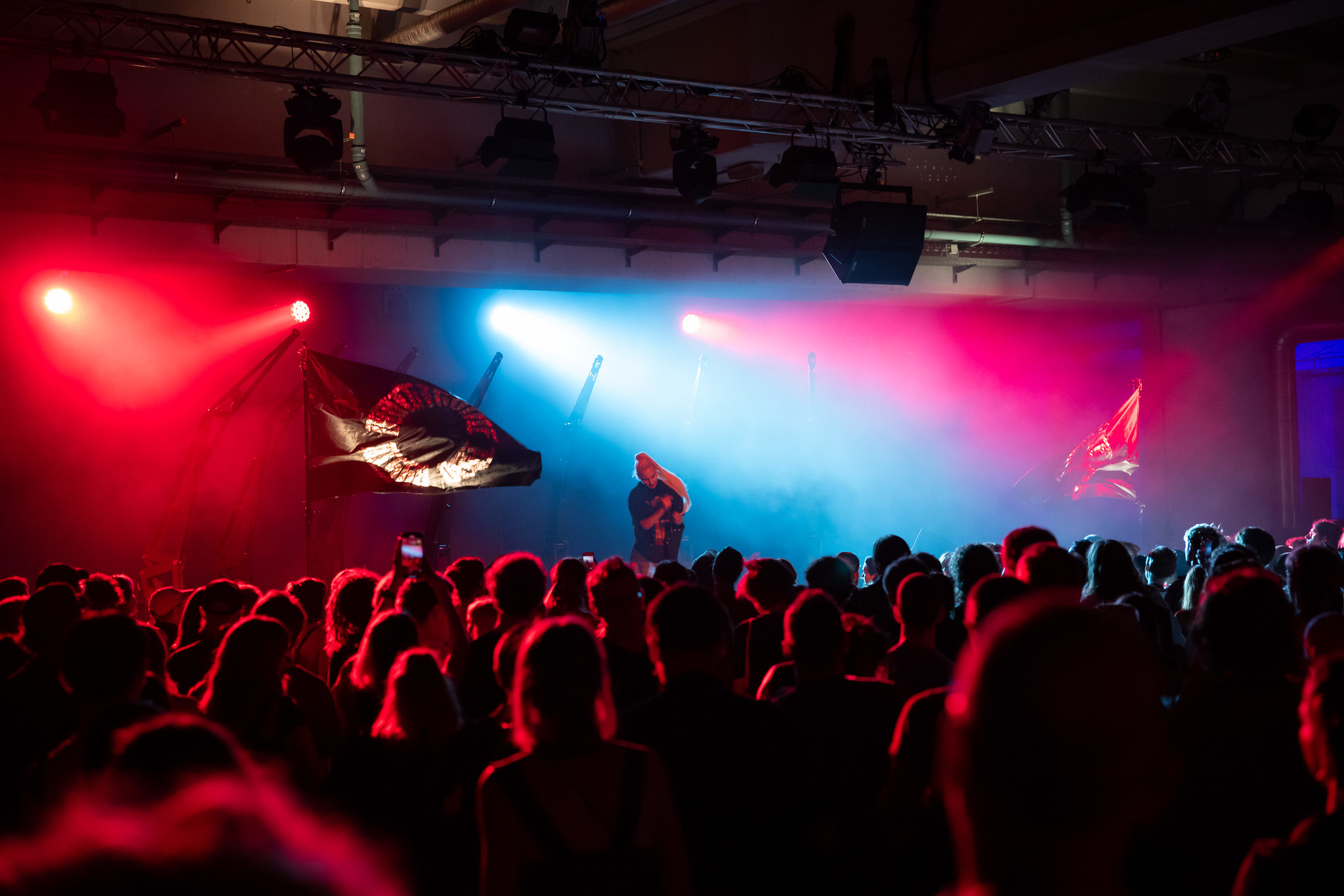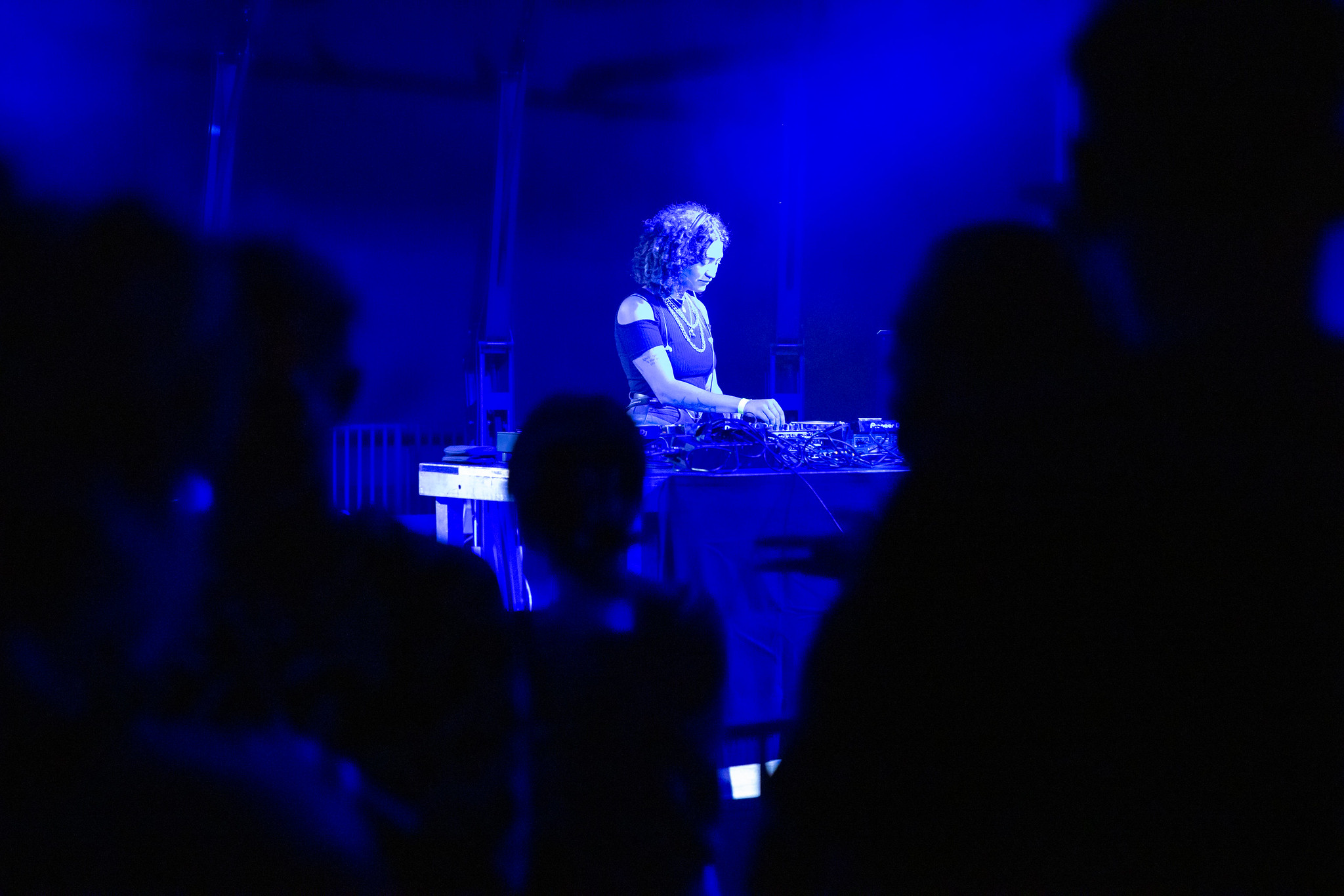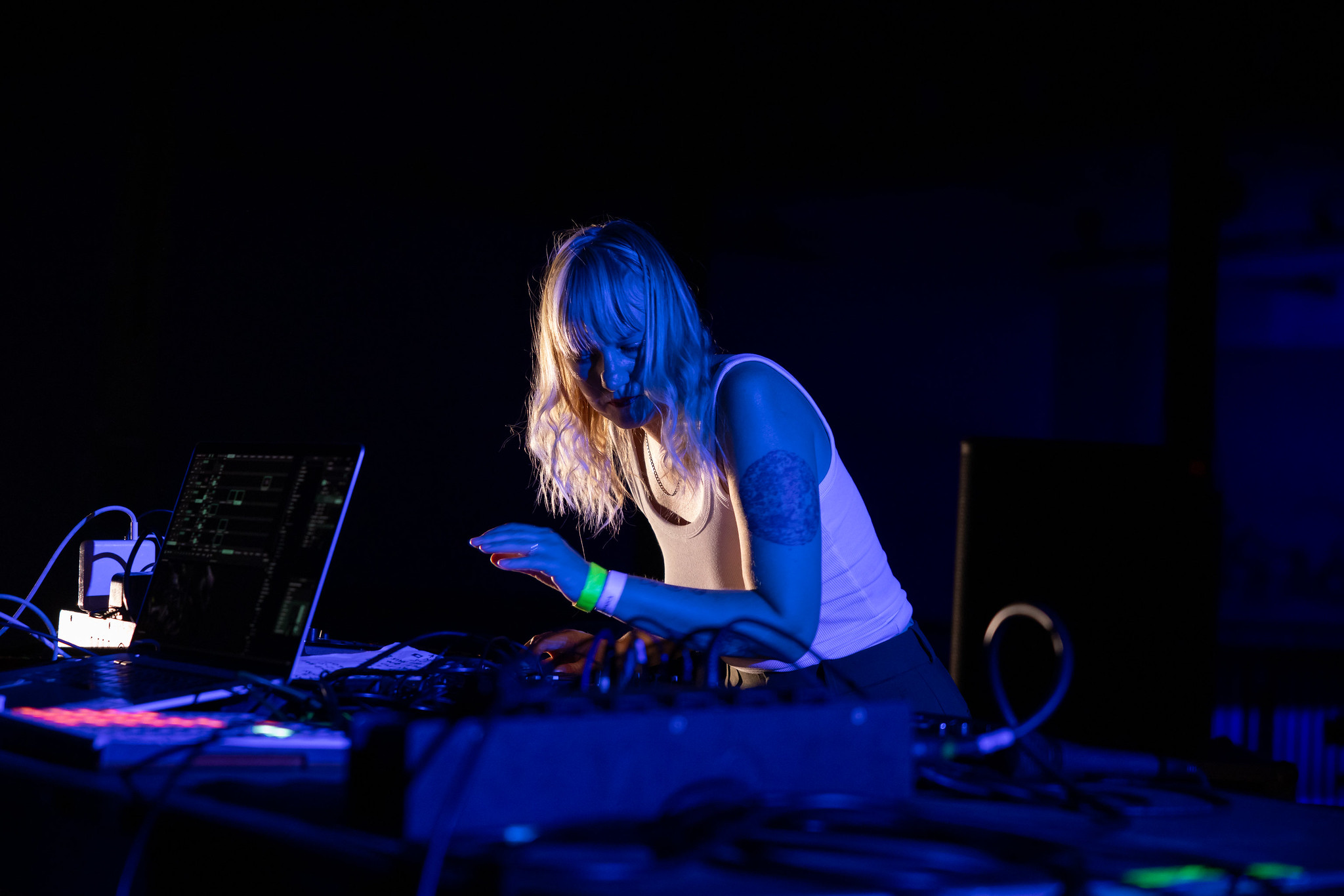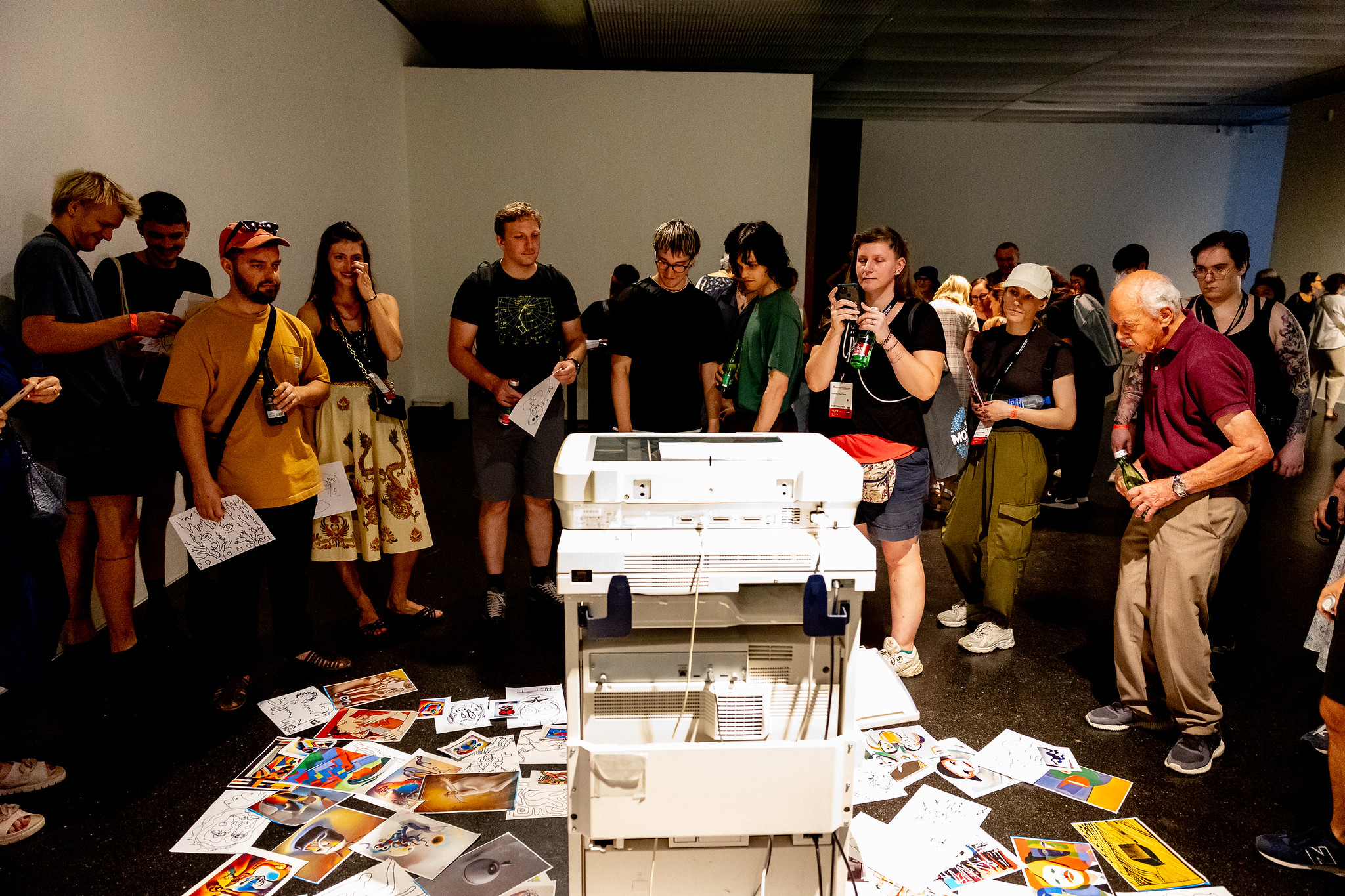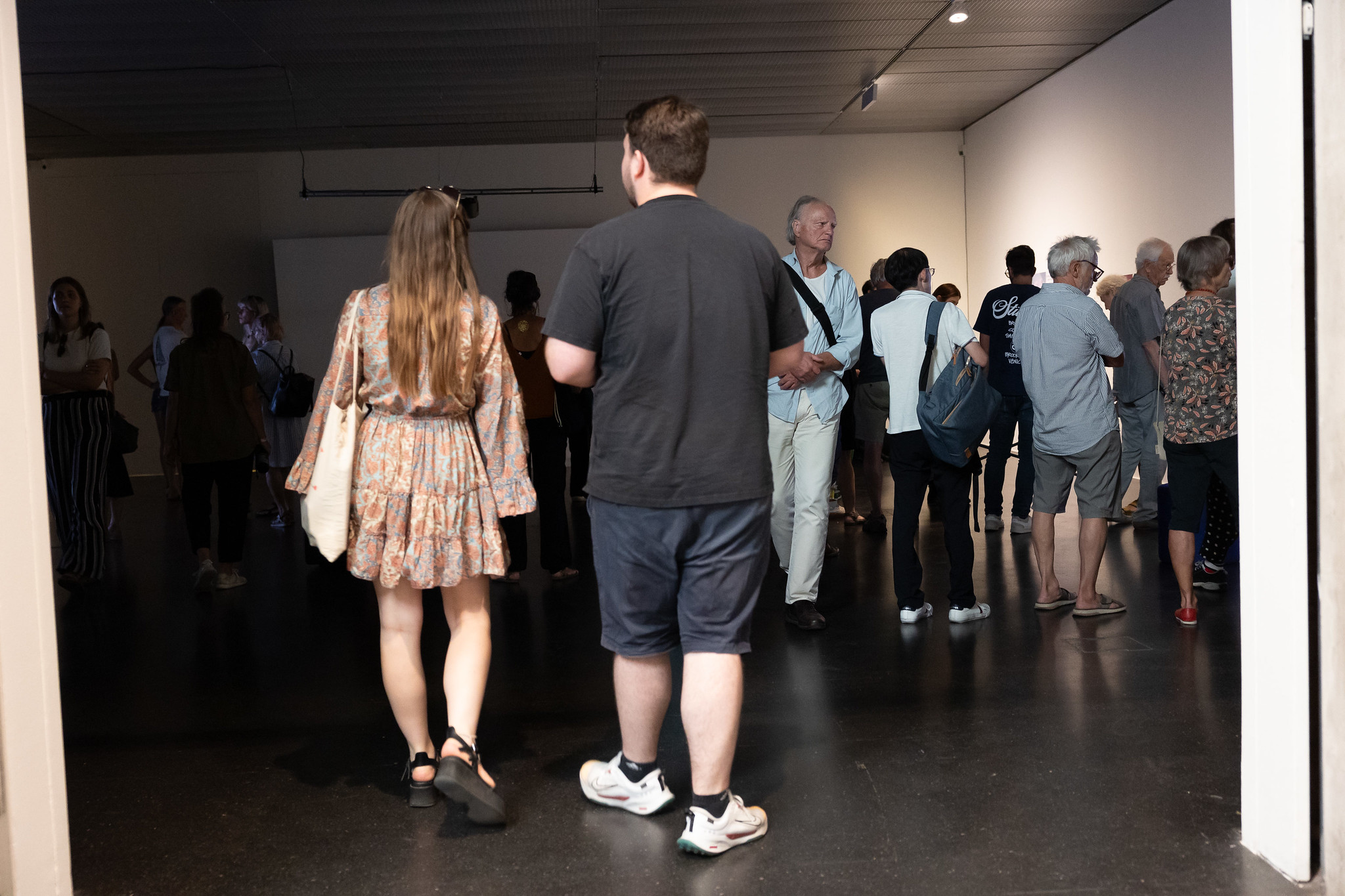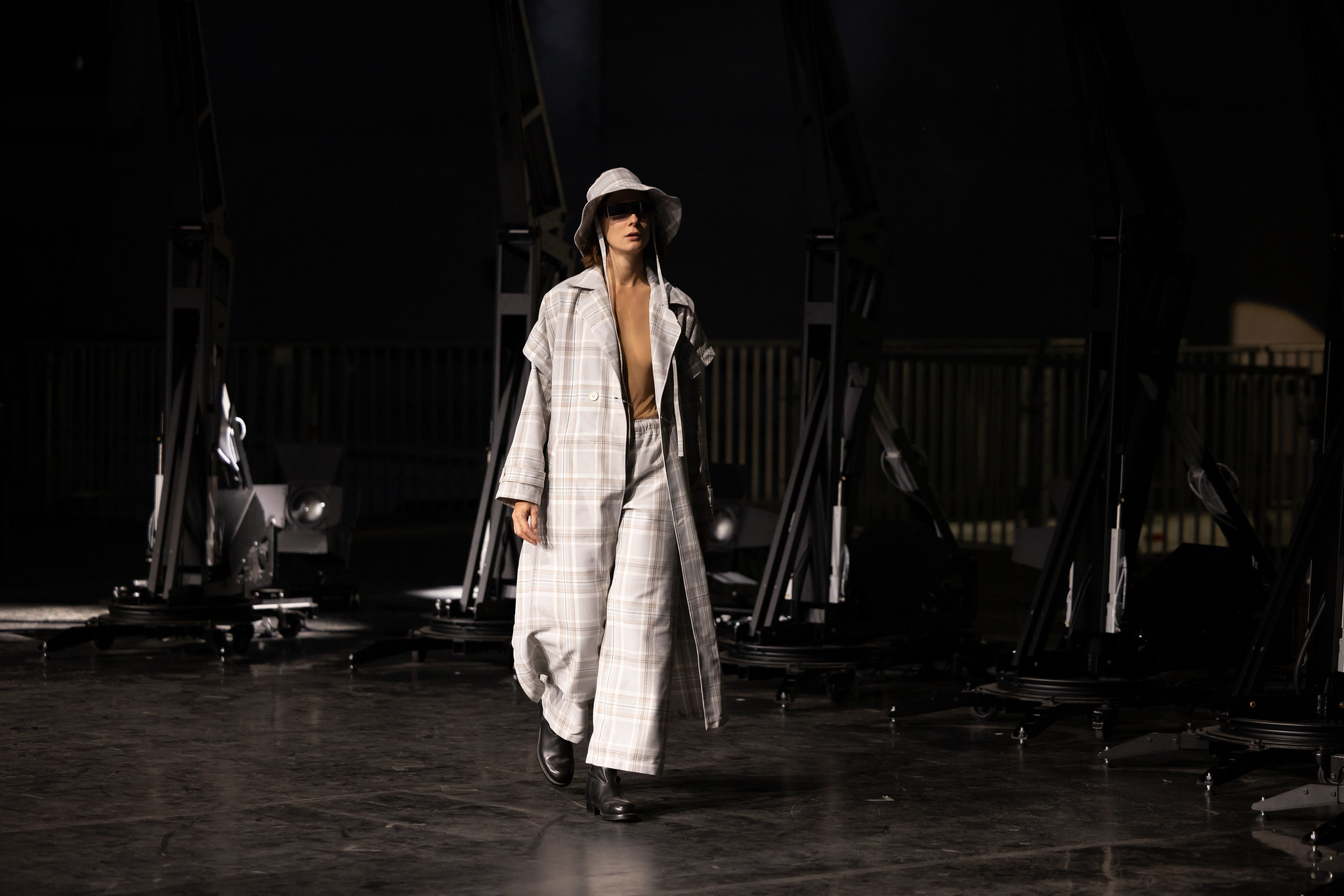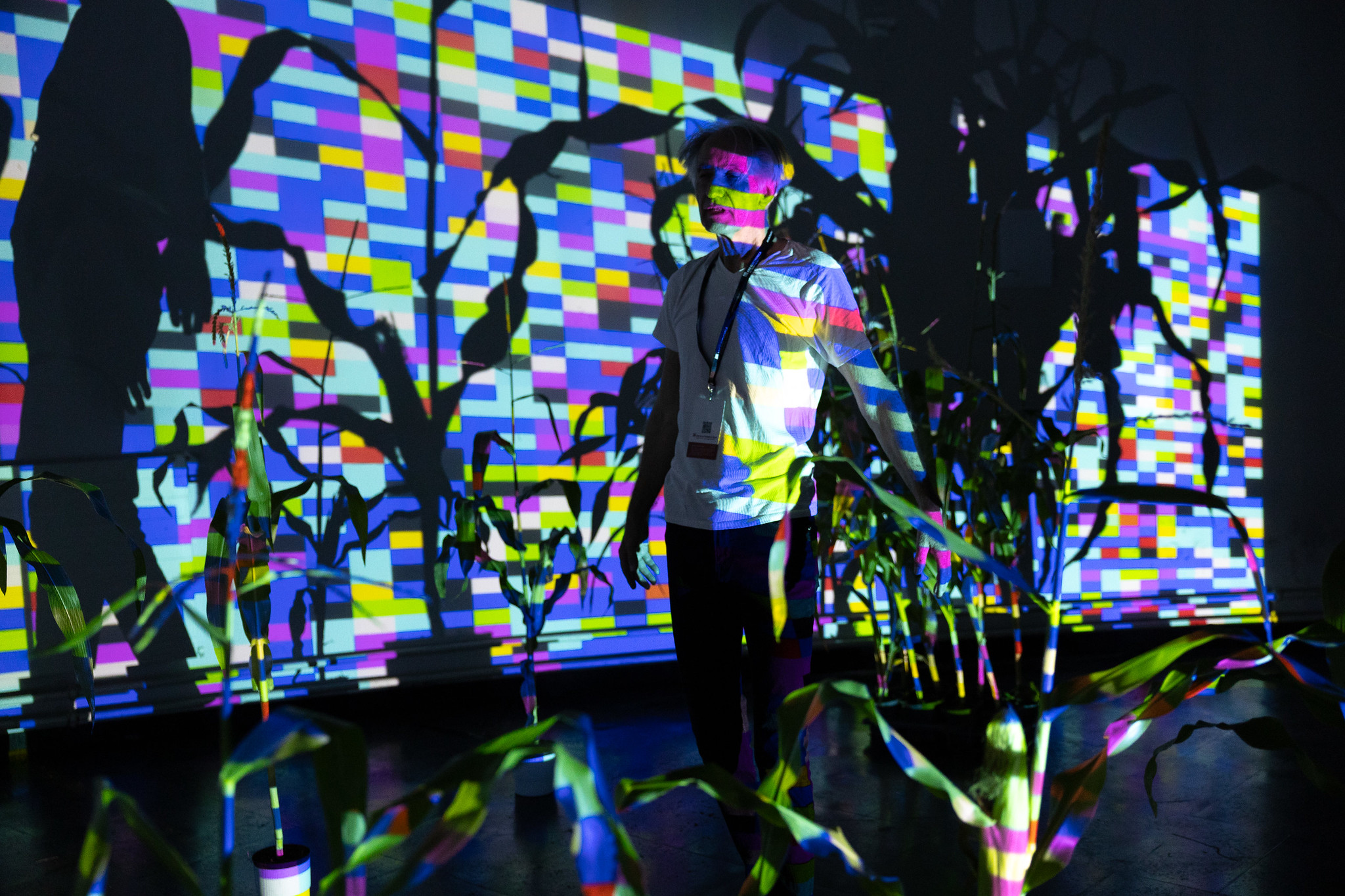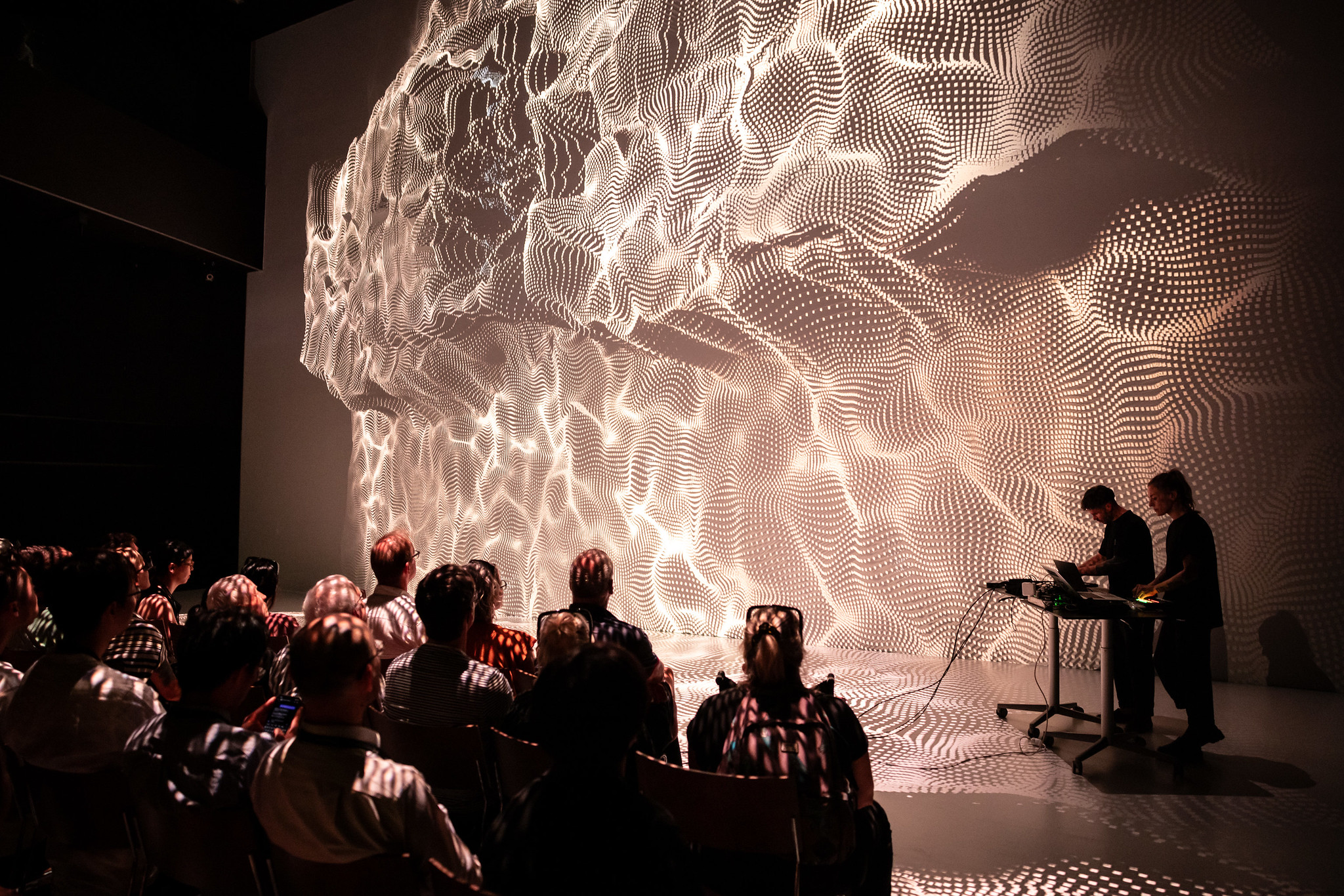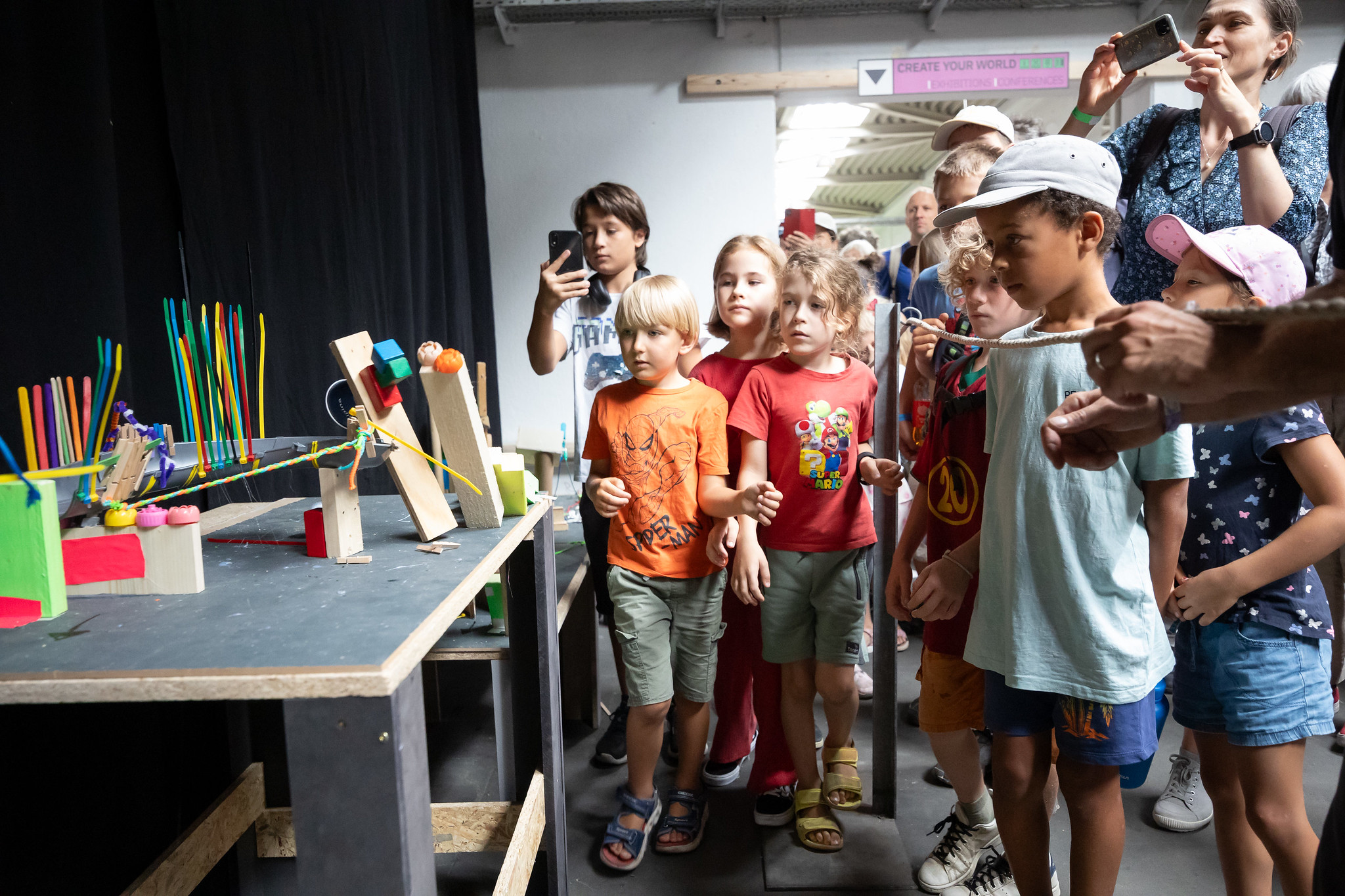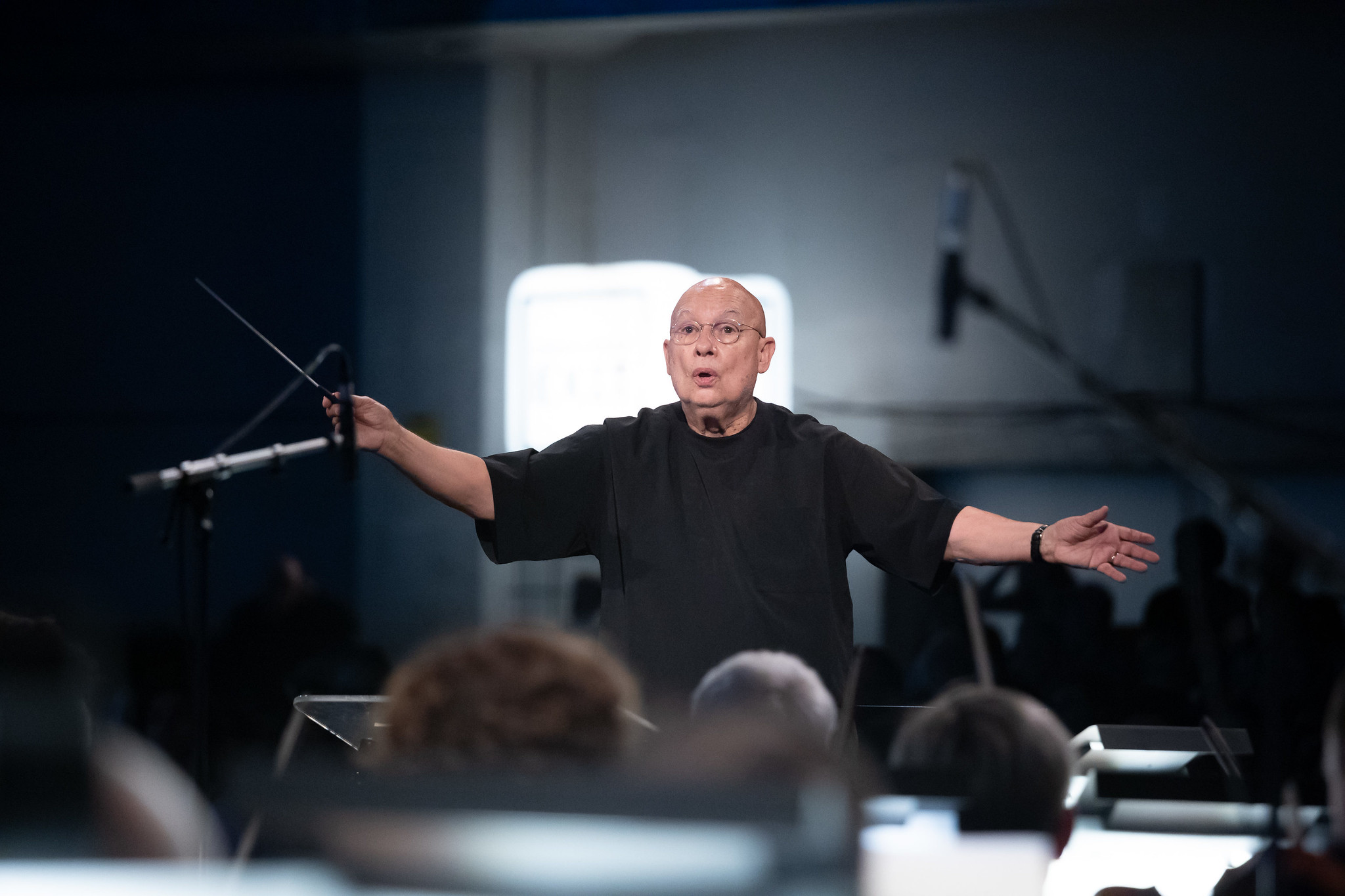Once again, the Ars Electronica Festival has shown what it is all about: creating space, time and an atmosphere in which people can exchange ideas and inspire each other.
1260 artists, scientists, developers, entrepreneurs and activists from 67 countries were guests in Linz over the past five days and contributed to Ars Electronica 2024. 10 official and another 8 associated venues were used and 498 events were organised. The atmosphere was outstanding, the programme first-class and the weather beautiful. With more than 112,000 visitors, this year’s festival was the most successful to date. In this review, we invite you to take a look back at the last five days. For those of you who couldn’t make it and are now wishing you could go back in time, don’t worry! One thing is certain: the Ars Electronica Festival will take place again next year from 3 to 7 September!
The traditional kick-off to the festival week was the Pre-Opening Walk on the evening before the official opening. The ‘Pre-Opening Walk’ is only the unofficial opening of Ars Electronica. However, because the walk from one exhibition opening to the next has long been very popular, it has now become part of the festival. The walk stopped at six festival locations, where curators and artists provided insights into their work, the international and local art scenes mingled, old acquaintances were cultivated and new contacts were made.
It started at the JKU MED Campus, the first Ars Electronica Festival location, with the exhibition JKU MEDCampus: Art + Science, which demonstrated the transformative power of combining artistic creativity with scientific research. The next stop was the Lentos Kunstmuseum Linz. The Prix Ars Electronica exhibition was presented here for the first time, showing the best media art projects of 2024, including those that had just been awarded the Golden Nicas. It then moved on to the Linz University of Art, the centre of the ‘Festival Campus’. 42 universities were guests in Linz and presented projects by their students and teachers. This time it was the turn of Moholy-Nagy University of Budapest to be the ‘Special Featured Guest’ at Splace on Linz’s main square, Hauptplatz, to show a sample of its excellence. At 8:30 p.m., the invitation was extended to the Atelierhaus Salzamt, where Jürgen Hagler (professor at the Research Center Hagenberg) and Gerfried Stocker opened a show on interactive media and gaming.
There was no time to linger, because on the other side of the Danube, the Ars Electronica Center kicked off a high-profile evening event dedicated to cultural heritage with an immersive tour of the venerable Notre Dame and gigapixel images of Vittore Carpaccio’s ‘Young Knight in a Landscape’. Next door, at Linz’s Stadtwerkstatt, the 10th edition of the annual 48-hour non-stop showcase extravaganza STWST48 was celebrated under the motto “STWST48x10 NOPE. 48 HOURS OF VARIOUS COMMENTS”, the 10th edition of the annual 48-hour non-stop showcase extravaganza STWST48 was celebrated. At the stroke of midnight, Bill Fontana’s Silent Echoes finally sounded in Linz’s Mariendom, marking the end of an intensive and well-attended “Pre-Opening Walk”.
Day 1: Cultural Heritage Day
The next day, we had to get up early to make sure we didn’t miss any of the first day of the festival, Cultural Heritage Day: cultural heritage encompasses not only historical monuments, works of art and traditions, but also the intangible values that shape communities and are passed down through generations. Just like cultural heritage, Ars Electronica creates a space where the past, present and future come together by combining artistic and technological innovations. In keeping with this, the programme on the first day covered a range of topics from dialogues in the field of tension between politics, art, technology and society to digital reproductions of world-famous art and cultural treasures. But one thing at a time.
At 10 o’clock on the dot, POSTCITY opened its doors and invited visitors to explore its impressive parcel chutes, spacious halls, bunker and rail yard. In the workshop ‘Energizing Neighborhoods: From Dialogue to Co-Creation’, participants developed Positive Energy Districts (PEDs) together. They were confronted with various challenges and perspectives of the stakeholders involved in order to develop practical solutions for sustainable neighborhoods.
A festival is a place where people meet and react spontaneously to one another. These reactions are constantly being re-evaluated. The symposium ‘Perspectives on Political Education’ showed that art can serve as a means to positively shape such encounters and helps to consciously experience the new and broaden our perspective.
Collaboration between IT:U Interdisciplinary Transformation University Austria and Ars Electronica began in 2023 with the FOUNDING LAB, which was set up to redesign the future of universities. This work continued at this year’s ‘Open Research & Education’ conference, where current practices were highlighted and international discussions were encouraged that could influence the future of AI in education.
The sound performance ‘Fu(n)ga: bio-sonic listening sessions’ transformed the bunker of POSTCITY into a world of sound made up of different melodies and rhythms, allowing the listeners themselves to become performers.
The journey continued by bus, tram or bike to the new festival location on the JKU MED Campus, where students and teachers from the Johannes Kepler University Linz presented projects that combined art and science in a unique way. The #ALPHALOOP performance at Ars Electronica 2024 explored the intersection of nature and technology through a form of ‘techno-shamanism’. In an immersive experience combining 360° cinema with live performance, up to six participants followed two figures, a shaman and a tech master, through an augmented reality that merged their perception of the digital and physical worlds.
In JKU medSPACE, the screening ‘touching thoughts / kicking cancer’ dealt with advanced imaging techniques such as light sheet microscopy, confocal microscopy and expansion microscopy and showed 3D data sets of neuronal networks and cancer tissue.

While the POSTCITY and JKU MED campus shone with workshops, performances and keynotes, the Ars Electronica Center focused on digital cultural heritage. Following in the footsteps of renowned partners such as the Grand Palais Immersif Paris, the Museo Nacional Centro de Arte, or the Vatican Museums, this year it was the turn of the startups Iconem and Histovery from Paris, the Museo Nacional Thyssen-Bornemisza from Madrid and the Kaiserschild Foundation to present digitised art and cultural treasures in Deep Space 8K.
After the devastating fire in 2019, Notre-Dame rose from the ashes in the form of an immersive experience. In collaboration with French start-ups Iconem and Histovery, the Ars Electronica Futurelab brought the cathedral into deep space 8K. Visitors were able to explore a huge 3D model and discover architecture and works of art from new perspectives.
The collaboration with the Museo Nacional Thyssen-Bornemisza in Madrid, supported by the Spanish Embassy in Vienna, focused on the early Renaissance. High-resolution gigapixel images of Vittore Carpaccio’s painting Young Knight in a Landscape were shown.
Together with the Kaiserschild Foundation, the Old Gallery in Eggenberg Palace in Graz and other museums, works by the Dutch master and famous still life painter Pieter Claesz were presented. The contribution to Ars Electronica 2024 was part of the ‘Kaiserschild Art Defined’ project, in which the foundation made works of art from its own and other collections accessible to a broad public in an innovative way.
The finale in the packed Deep Space 8K was the dance performance ‘WHAT IS REMAINING’, a multidisciplinary collaboration between TANZ LINZ and the Department of Time-Based and Interactive Media Art at the University of Art and Design Linz.
In the evening, visitors and participants gathered in front of the Mariendom for the official opening. Musician Lou Asril kicked off the evening with his unmistakable style of soul, electro and hip hop.
There was no time to catch one’s breath, because Ei Wada made a stop in Linz with his ELECTRONICOS FANTASTICOS! And anyone who knows him also knows what to expect: a huge party! With his whimsical musical instruments made from discarded consumer electronics, he sent the entire Domplatz into a frenzy and made it impossible to escape the rhythm of the music.
But there was more to celebrate than just the opening of the festival: Wednesday, 4 September 2024 would also have been the 200th birthday of the Upper Austrian composer and organist Anton Bruckner. Reason enough to bring together a team of artists, organists, computer scientists and physicists in St Mary’s Cathedral to perform Bruckner’s ‘Perger Präludium’ and have it conducted by entangled photons.
After that, the stage belonged to the chamber musicians of the Bruckner Orchestra Linz, who played Anton Bruckner’s Symphony No. 7. The finale was provided by the 12-piece ensemble ‘NoFive’ with their performance ‘Bruckner x Pop x No Wave’. Bruckner’s Fifth merged with the iconic ‘Seven Nation Army’ riff by the White Stripes, was shaken and stirred in Glenn Branca style, and formed an avant-garde soundscape somewhere between high and pop culture. A long day was coming to an end, but there was not much time to rest.
Day 2: S+T+ARTS Day
The second day of the Ars Electronica Festival was dedicated to S+T+ARTS. This Thursday was dedicated entirely to the connection between art, technology and science. The European Commission ‘s S+T+ARTS initiative aims to link artistic practice and technological developments in order to give new impetus to both Europe’s innovation policy and the arts. The focus is on people and projects that make an important contribution to overcoming Europe’s social, ecological and economic challenges. Every year, the S+T+ARTS Prize honours visionary projects at this interface that have the potential to drive social and economic innovation.
This year, the STARTS exhibition showcased not only the projects of the STARTS prizewinners and STARTS Prize Africa winners, but also the work developed in the STARTS4Africa and STARTS in the City residency programmes, as well as the results of other EU projects that take a similar approach, such as the SPARK Academy project and Label4Future projects.
The STARTS Day conference showed how conscious technological decisions are necessary for a just future. The theme symposium, which accompanied us for three days of the festival and focussed on bearers of hope, was entitled ‘Reclaim, Relearn, Resist’ and featured prominent personalities such as Francesca Bria, Kate Crawford and Vladan Joler.
This year, for the first time, there were so-called town hall meetings where artists could exchange ideas and network with each other. The Art Thinking Lounge meetings were well attended and there was an intensive exchange between the participants.
The State of the ART(ist) Talks were also held on the first floor of POSTCITY. The State of the ART(ist) initiative, a collaboration between Ars Electronica and the Austrian Foreign Ministry, supports artists whose livelihoods are under threat, whether in the form of political persecution or environmental disasters. The two talks, ‘Creative Resilience in Challenging Times’ and ‘Artists at Risk (AR) and Ecologists at Risk (ER) as Peer Movements Standing for Resistance and Change’, deal with the role of art and creativity in response to global challenges such as environmental destruction, political persecution and censorship, as well as social inequality.
Meanwhile, the noise level in the catacombs increased significantly. A Casavant organ from 1910, brought back to life in ‘Organism: In Turbulence’ by Navid Navab and Garnet Willis, sent the audience into a trance with its hypnotic sounds.
Fabio Machiavelli’s ‘Machines Inside Me’, a performance in which he played self-built electromechanical instruments, took us out of our dreams one floor above in the Train Hall .

Anyone who was unsure whether they could cope with the wealth of impressions and projects on their own or wanted to find out more about the works was in good hands with the colleagues at the WE GUIDE YOU Desk: From Spotlight Tours, which gave a first insight into the different focal points of the festival, to Expert Tours, where visitors could talk to the scientists, artists or curators themselves.
10 official and 8 additional associated locations were used during the Ars Electronica Festival. One of these was the Theater Phönix, which impressed with the multisensory theatre installation ‘KLIMAZONE: reloaded’ by Rainer Gutternigg and Manu Mitterhuber. The production made the topic of climate change tangible in an impressive way by relying on sound and physical perception and deliberately avoiding classical spoken theatre in order to create an intense sensory experience.
A detour across the Danube takes us to the Ars Electronica Center’s Deep Space 8K. At ‘State of Play: شهر بازی’, the audience was taken on an interactive journey in which the plot was constantly being reshaped by the decisions and interactions of the viewers.
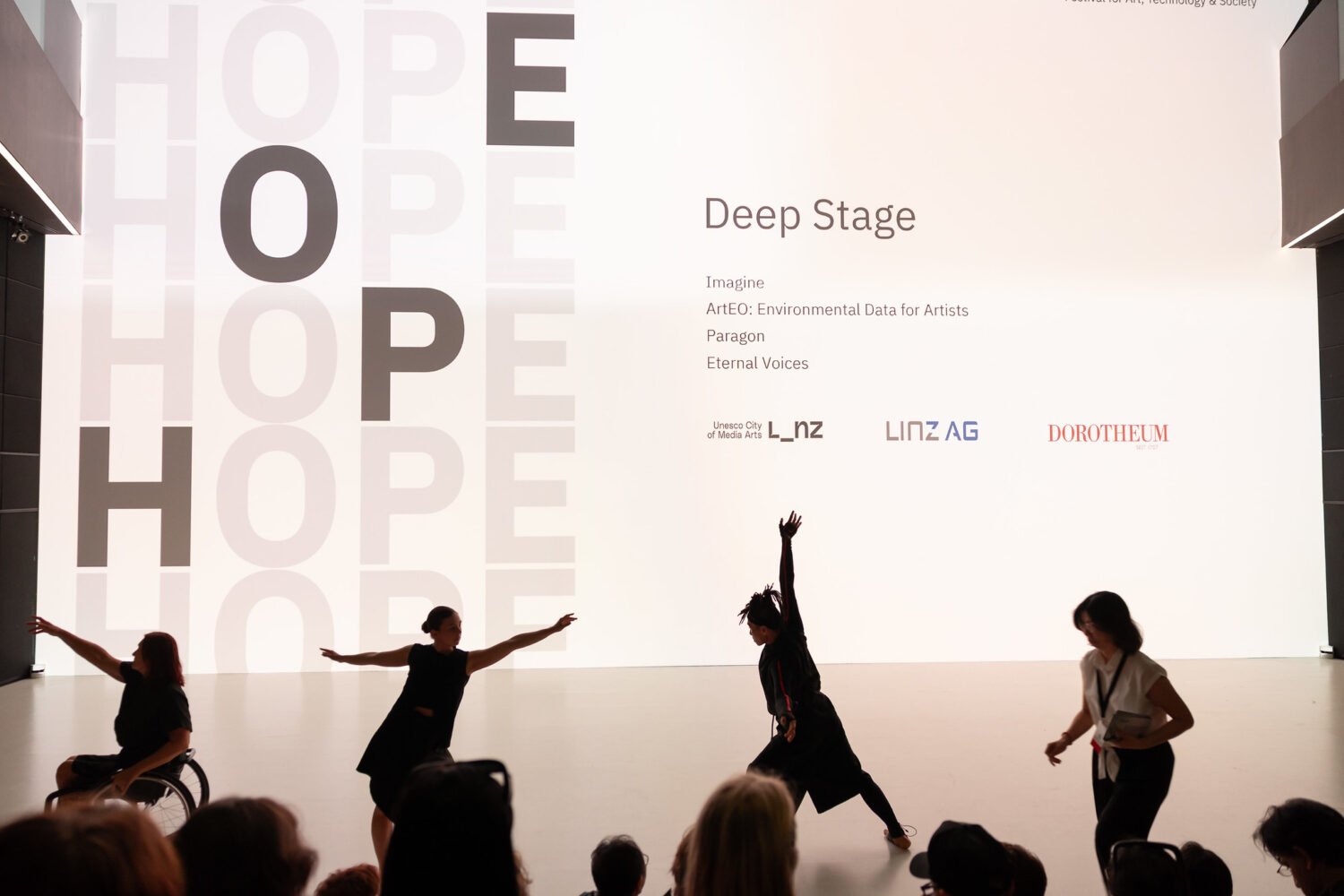
Deep Space’s evening programme was ‘Deep Stage’, a carefully curated presentation of impressive audiovisual works by international artists.
The highlight and conclusion of the second day of the festival took place at the Design Center Linz. The Prix Ars Electronica Award Ceremony took place there for the first time, with the Golden Nicas, the S+T+ARTS Prize, the ‘S+T+ARTS Prize Africa’, the ‘European Union Prize for Citizen Science’ of the European Commission, and the ‘Ars Electronica Award for Digital Humanity’ being presented.
Day 3: Sustainable Futures Day
Half-time at the Ars Electronica Festival. Ali Nikrang, Key Researcher & Artist at the Ars Electronica Futurelab, kicked off the day with an exciting lecture on artificial intelligence and art. Although POSTCITY had only opened its doors a few minutes earlier, the lecture was very well attended.
For the 20th anniversary of Interface Cultures at the University of Art and Design Linz, a campus exhibition featured short Pecha Kucha talks. In these, graduates reported on their artistic and professional development since graduating and presented current projects in the process of creation. Those who stayed until the end were rewarded with cake – a sweet end to an inspiring event!
The third day of the festival was all about ‘Sustainable Futures’ and focussed on the Studiotopia conference ‘Going Green! Stories of Reinvention, Disruption and Systemic Change to Reclaim Our Future’, which focussed on inspiring efforts by companies, start-ups, initiatives, artists and political decision-makers. Journalist Rachel Donald, artist Beatie Wolfe, Professor Jiabao Li and numerous other experts discussed ways to make our technological systems more sustainable on the second day of the symposium.
Art and culture play an important role in bridging the gap between technology and society and contributing to technological innovation. The workshop programme during the Ars Electronics Festival invited the festival audience to meet with experienced professionals to inspire each other and exchange ideas and know-how. The workshop ‘Critical Cartography of the New Extractivism’ by researcher and artist Vladan Joler shed light on the hidden power structures behind global communication and computer systems and provided insights into the mechanisms that control these systems.
When was the last time you thanked your coffee machine after it made you a fresh espresso? How does an apple feel in the microwave? And what does the photocopier think about the artwork you want it to scan? The workshop ‘Artificial Physical Intelligence’ by Jan Zuiderveld invited participants to reflect on the shifting dynamics of power, agency and creativity between us and the machines we create.
Ars Electronica has one of the world’s most comprehensive archives of digital media art, which has been continuously expanded since 1979. It documents the development of international media art over more than four decades. As part of an EU project and with the support of the Federal Ministry for Arts, Culture, the Civil Service and Sport, this archive has now been comprehensively expanded. The panel ‘State of the Archive: Current Approaches to Digital Archives and Archives for Digital [Art]’ presented this relaunch and highlighted strategies for making digitised art and cultural assets more visible and accessible.
In the Open Futurelab, visitors were able to network and exchange ideas with the Ars Electronica Futurelab team, partners and other participants. The exhibition offered in-depth insights, while extraordinary experiences awaited in Deep Space 8K at the Ars Electronica Centre. The Expert Tour: Open Futurelab gave participants comprehensive insights into the Futurelab’s current projects and visions. The aim was not only to present completed projects, but above all to promote discourse.
Ars Electronica Solutions also presented its activities as part of the festival. From projects with KEBA to the worldwide export of the Deep Space 8K.
An exclusive artists’ tour moderated by Christophe De Jaeger offered an exciting opportunity to meet the winners of the STARTS Prize Africa and learn more about the STARTS4AFRICA residency.
Before heading to the Gleishalle for the big concert night that day, many made a detour to the other side of the Danube. The art of animation was the focus of the ‘EXPANDED 2024 – Conference on Animation and Interactive Art’ conference. The twelfth edition focussed on academic contributions in the field of extended animation and interactive art, which explore audiovisual forms of expression at the interface of art and technology. With Paul Trillo, Rachel Maclean and Nicolas Gourault, winners of the Prix Ars Electronica 2024 gave insights into their current works.
Everything you always wanted to know about artificial intelligence was humorously and musically conveyed during the event ‘G’sungen, g’rappt & g’stanzlt: Was Sie schon immer über KI wissen sollten‘ in a humorous and musical way. The singer-songwriter Blonder Engel, as well as the rappers Flip & Yasmo performed live and presented songs that try to motivate even less tech-savvy listeners to engage with AI.
But now back to POSTCITY for the highlight of the evening. The Cello Octet Amsterdam and visual artist Nick Verstand hosted the Great Concert Night in the Gleishalle. Eight musicians and eight robots stood on stage – the human protagonists ‘embraced’ by metre-long mechanical arms – and formed a ‘cocoon’. This slowly unfolded and moved in harmony with the music, creating a unique, visually and acoustically fascinating atmosphere. In the second part of the evening, the eight cellists played two works by Philip Glass with pianist Maki Namekawa.
Those who still had energy left could turn night into day at the Ars Electronica Nightline. People danced and celebrated all night long to fast beats, electronic sounds and audiovisual performances in the Train Hall of the POSTCITY.
Day 4: Prix Day
On the penultimate day of the festival, the winners of the Prix Ars Electronica took centre stage. Their visions, ideas and projects were presented in the Prix Ars Electronica Exhibition and discussed at the Prix Ars Electronica Forum.
The Prix Ars Electronica is the world’s longest-established media art competition. Launched in 1987, the competition in Linz has recorded around 90,700 entries to date, with 2,950 entries in 2024 alone. This year, the Lentos Kunstmuseum Linz hosted the Prix Ars Electronica Exhibition for the first time. The award-winning projects by Beatie Wolfe, Diane Cescuttiand Paul Trillo were among those on show.

What does it take to realise the full potential of AI in art? The Prix Ars Electronica Forum addressed this question under the title ‘AI and Artistic Creation’ and offered a day full of insightful sessions, interactive workshops and inspiring case studies.
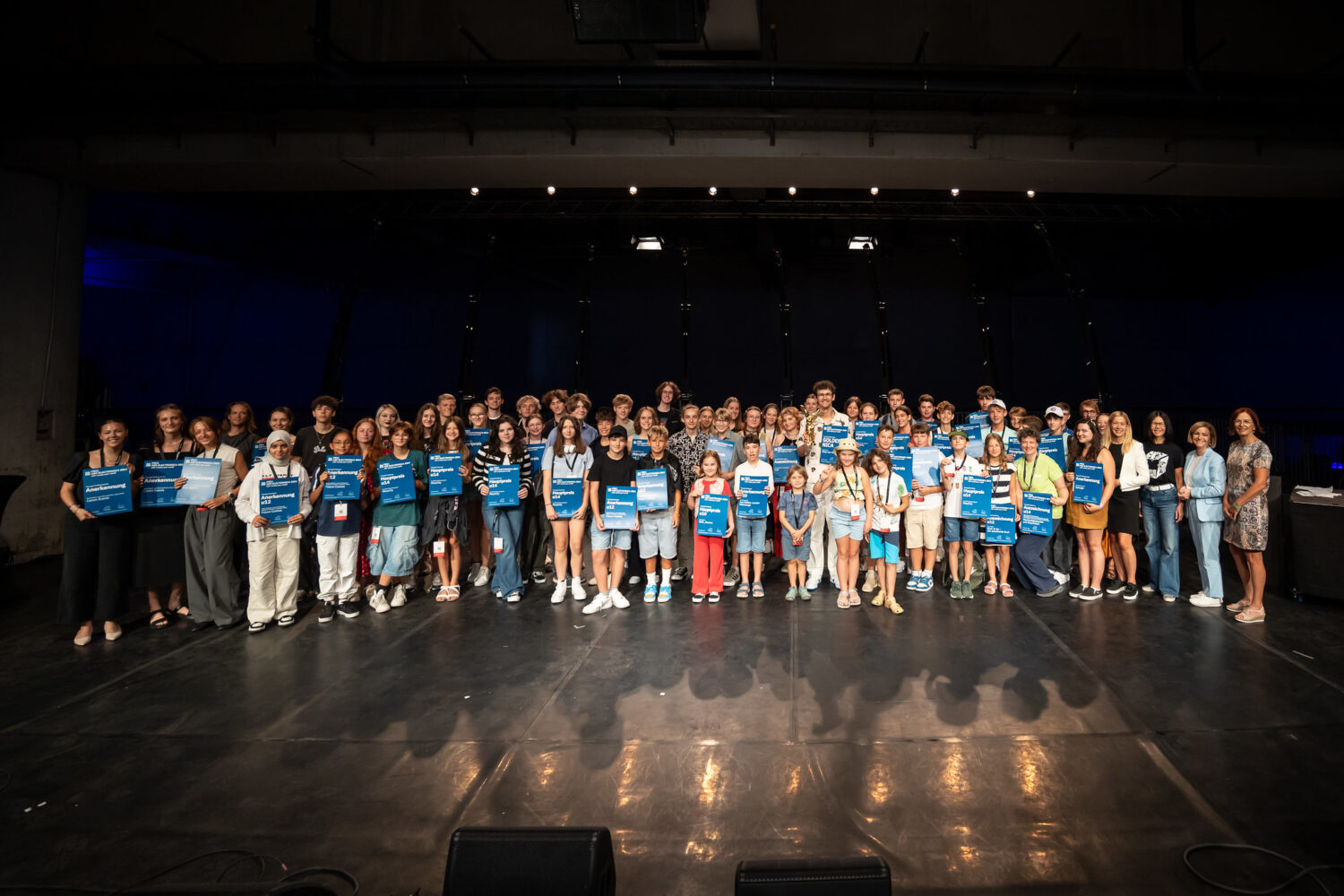
In the meantime, the prizewinners of this year’s Prix Ars Electronica in the category u19–create your world gathered in the Train Hall for the festive award ceremony. The 23 winning projects were presented by moderator Conny Lee, who gave the young artists their certificates and provided a brief insight into the thoughts behind their projects.
You don’t have to travel far to experience the world’s catwalks. Immediately after the award ceremony, the Train Hall was transformed into a giant runway. The fashion show ‘SUPERIMPOSITION’ impressed with innovative sound-absorbing fashion inspired by geometric shapes and oriental influences. The combination of avant-garde design and state-of-the-art technology created a unique atmosphere that immersed the audience in an immersive world of sound and fashion.
The exhibition HOPE: the touch of many illuminated the theme of this year’s festival from a variety of perspectives. Like last year, its exhibits filled the bunkers and basements of POSTCITY, illuminating dark corridors and putting halls full of parcel tapes and mail chutes in a completely different light.
Anyone who wanted to take a closer look at the themed exhibition could join co-curator Olga Tykhonova on a guided tour through the underground network of the former postal distribution centre
POSTCITY is characterised not only by its catacombs, but also by its green roof, from which you can enjoy a fascinating, completely new view of the city of Linz. This year, the city ecologist and botanist Friedrich Schwarz once again took visitors on a journey into the fascinating, species-rich and rare world of plants that have secured their survival in the middle of the city.
Pianographique with pianist Maki Namekawa and visual artist Cori O’Lan, which took place in the Gleishalle once again this year, has become an integral part of the programme.

More than 42 universities from all over the world were part of this year’s Ars Electronica Campus Exhibition and could be visited at POSTCITY and the University of Art and Design Linz. For the first time, the Ars Electronica Festival 2024 honoured the best project at the Ars Electronica Campus Exhibition with its own award. The Campus Award highlights emerging talent and the educational institutions that support them and provides a platform to recognise and celebrate excellence in the fields of media art and design. ACV (Algorithmic Cultural Vandalism) by Pietro Lugaro and Alessandro Mac-Nelly was honoured as the best project of this year’s Ars Electronica Campus.
Since 2016, the Anton Bruckner Private University has hosted Sonic Saturday as part of the Ars Electronica Festival. Music enthusiasts had the opportunity to embark on a journey into the world of sonic exploration and inspiration, and to explore the complex interplay between sound and emotion.
In the evening, the Ars Electronica Futurelab hosted the Futurelab Night in Deep Space 8K at the Ars Electronica Centre. The event featured immersive short presentations and artistic performances that addressed the lab’s research questions and thus highly topical social issues.
Day 5: Create Your World Day
On the last day of the Ars Electronica Festival 2024, the focus was on the next generation. As part of create your world, the focus was not only on technological innovations, but also on making the interplay between art, technology and society practical and tangible.
During the festival, the create your world area was used for crafting, printing and sewing. In line with the motto ‘From Deconstruction to Construction’, the creative laboratory tinkertank and festival visitors went on an artistic-technological journey of discovery. Interactive modules were built from electronic waste, old toys and everyday objects as part of a chain reaction machine that was set in motion on Sunday morning.
Visitors were able to build and programme their own small robots in the Open Lab at Innovationshauptplatz Linz. The robots demonstrated their dancing skills in the RoboRave performance and delighted the audience with their original movements.

One last time, we cross the Danube to the Deep Space 8K of the Ars Electronica Center. The play ‘Peter, Paula & Panini’ combined individual drawings with AI images to provide a moving illustration of the effects of climate change.

Head of the Planetarium Engineering Department at the California Academy of Sciences, Dan Tell is no stranger to deep space and once again impressed visitors this year with a fascinating lecture on the history of mankind and the search for other civilisations.
Back in the track hall of the former postal distribution centre, Dennis Russell Davies and the Brno Philharmonic Orchestra concluded the Ars Electronica Festival 2024 with Philip Glass ‘ “Mishima”. Maki Namekawa shone as a soloist in the second part.
Finally, we would like to express our heartfelt thanks to all our partners and sponsors who made this festival possible, and with whom we hope to continue realising great projects in the future. Thank you very much!
After five days full of impressions, conversations, new ideas and projects, we are closing this chapter of the Ars Electronica Festival for now. We hope this review has taken you on a journey through unforgettable moments. Now we wish you a peaceful time to process what you have seen and to develop new ideas. We look forward to welcoming you all back from 3 to 7 September 2025 – wherever that may be!
